China
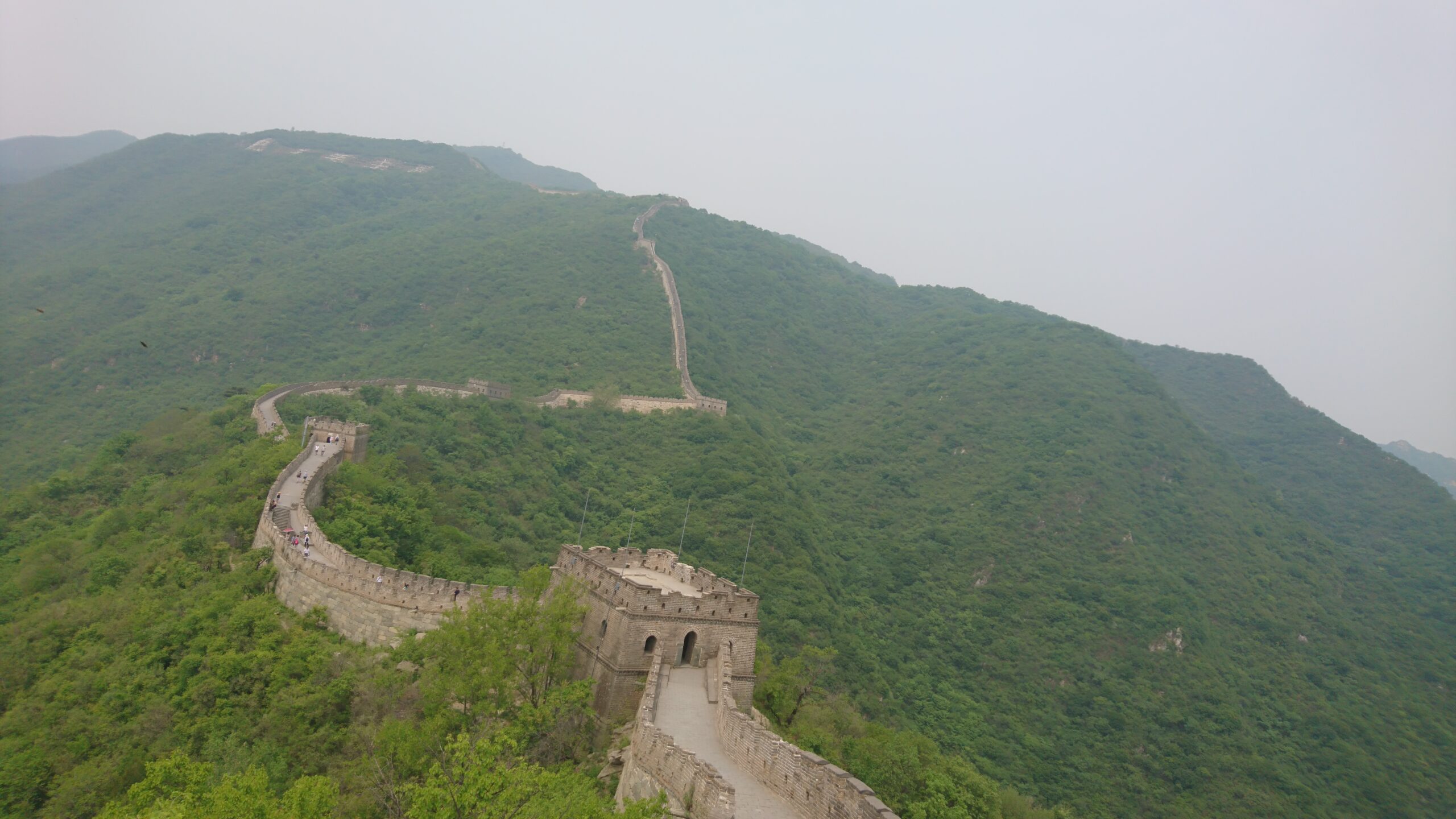
Cover: The Great Wall at Mutianyu, China
China is an amalgamation of old and new worlds. Thriving modern, technological cities and financial centers, in contrast to its ancient civilization, life in its small towns and villages where ancient culture thrives, and people lead simpler lives. China with its huge land mass and different provinces offers a variety of different landscapes, and a wonderful array of provincial cooking styles. Whether one visits China to enjoy nature, the cities or its history, you will come away in awe of the heady cocktail it offers!
Zoom in and out to view pins. Use the Share icon on top right corner of the map to send it to your phone or email. Click on the blue pins to see the name of the place.
A, D, G, H are the typical tourist route for a 10 to 12 day trip . B,C, E, F are what I added to my itinerary and would take an additional week.
What’s on this page?
IMPORTANT
-
- For any serious travel planning, view the blog on a laptop/large screen.
- Use the collapsible sections to see content within (+ to open, – to close).
- Every picture on the site has a caption that is not visibly displayed. On a laptop, hover over the image to check it’s caption/description, and if viewing on your phone, press finger down on the image.
Need help with trip planning?
-
- Use the Highlights section to create your own itinerary, OR
- If you have no time or inclination to do it yourself, visit Services & About for help. I will curate and customize a trip for you, based on your interests and needs. You will receive a well-planned day-by-day itinerary and travel advice ‘n more.
Tidbits
TIDBITS (+ to OPEN, - TO CLOSE)
The official currency of China is the Renminbi (RMB), abbreviated as CNY (Chinese Yuan). Credit cards are accepted in cities. If visiting from different countries, be aware of the foreign transaction fees your credit card bank might charge. Tipping is not part of the Chinese culture. However, it is expected of tourists to tip guides and drivers. You may tip in upscale restaurants where service charge is not already added, bars, salons and spas. Always good to carry some small denominations in cash.
In China, the standard voltage is 220 volts at a frequency of 50 Hz, and the electrical sockets commonly used are Type A and Type C (like European). Type A looks like the US pin but the voltage is 220 and so don’t get fooled.
Best time to visit? Spring is a popular time to visit China due to mild temperatures and blooming flowers. Totally avoid early May due to a holiday and big crowds. Autumn/Fall is a great season to visit.
Mandarin Chinese is the most widely spoken language in China. English is pretty well understood and spoken in cities, especially by tour guides, drivers, hotel staff and restaurants. It gets very hard to communicate in rural parts of China.
China overall is very safe for tourists. At times, petty crime like pickpocketing may exist and one needs to be aware. Also beware of getting into trouble/scams with a large knock-off market. The vendors are relentless in having you get over to their shops and that can be through various little alleys.
About the blog
Writing and pictures by Jyothi Shankar. Had the most interesting solo trip to China in 2018 where I traveled between places on my own but had an English speaking guide in each place, except Yangshuo. I had decided I wanted to spend time exploring that place on my own, and am so glad I did. Spent a leisurely time in the village, biking around or walking around, watched an incredible dance troupe that I could only catch in that place. Enjoy the blog!
China Highlights
The below section suggests activities for about 10 days in China. Most people I know typically go to Beijing, Xi’an and Shanghai and hence, I have only those three places in the below Highlights section. The Narrative has a description of some additional places I visited in China that are off the track and quite far from the tourist circuit.
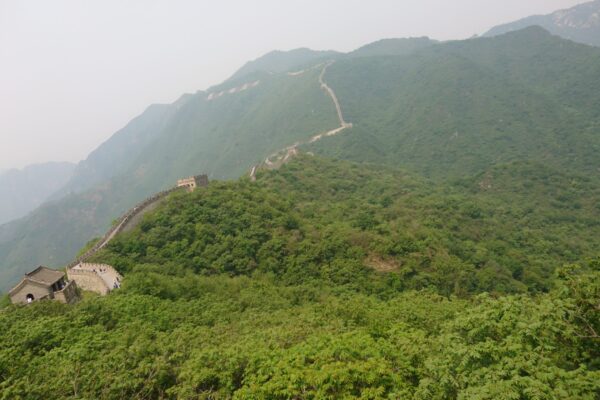
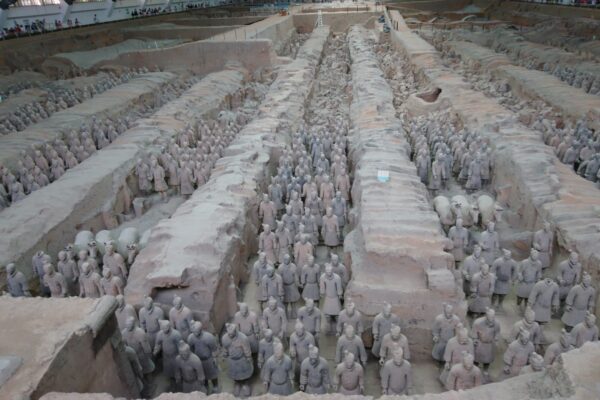
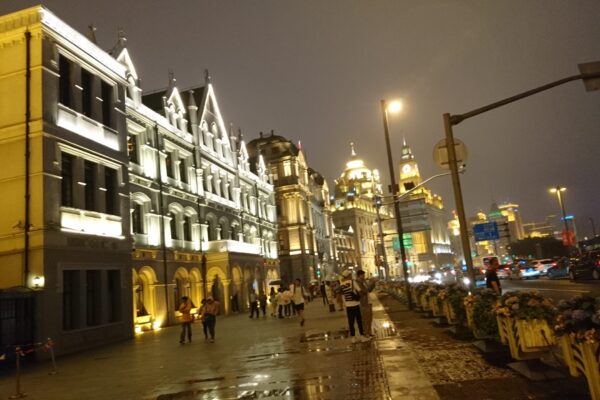
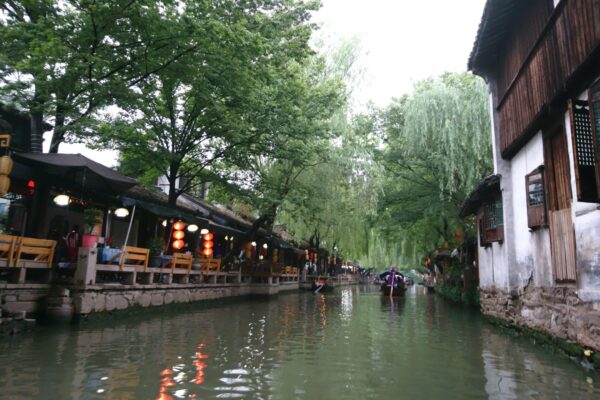
HIGHLIGHTS (+ to OPEN, - TO CLOSE)
Beijing
The capital city of China, the city simply brims with history, culture, and iconic landmarks.
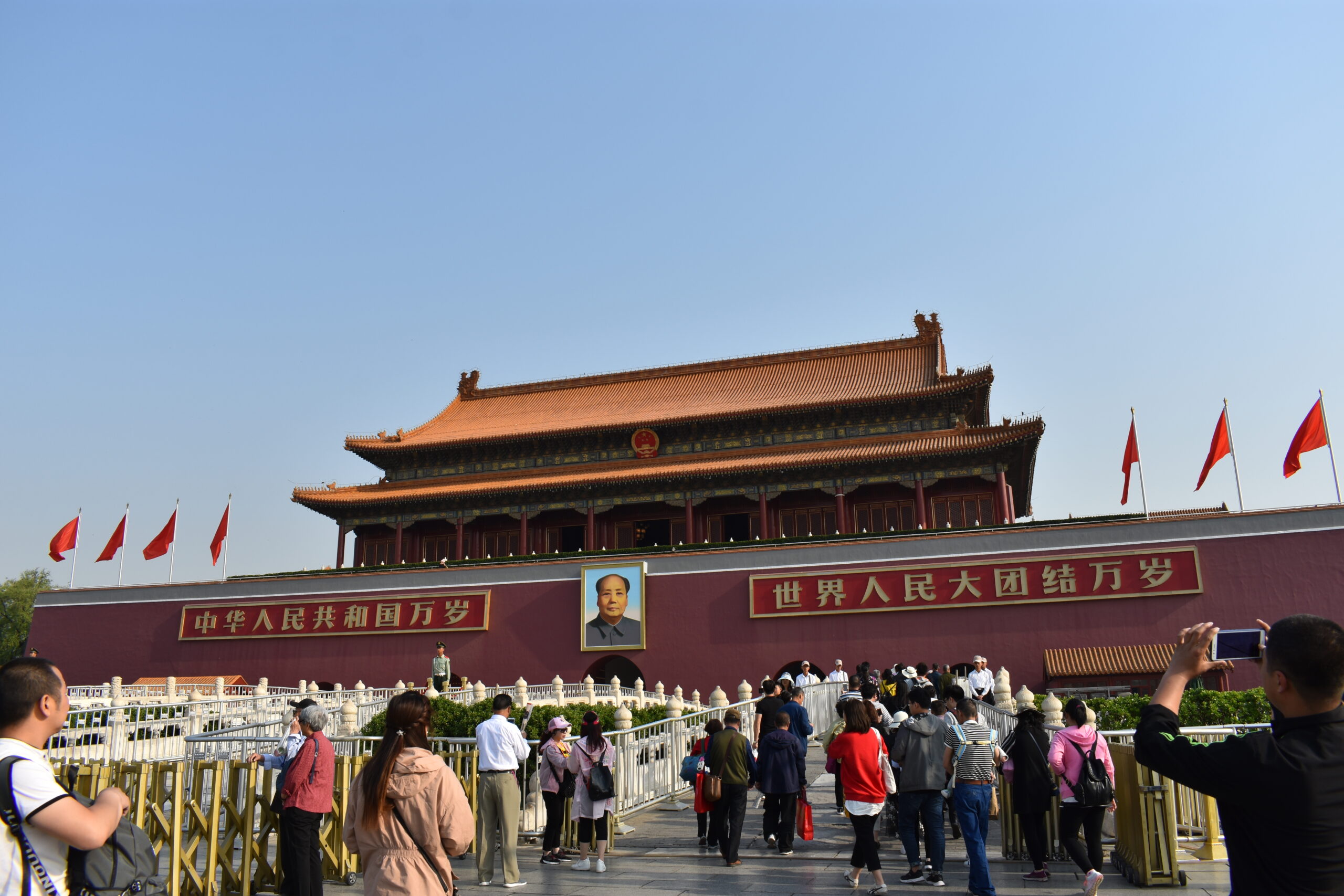
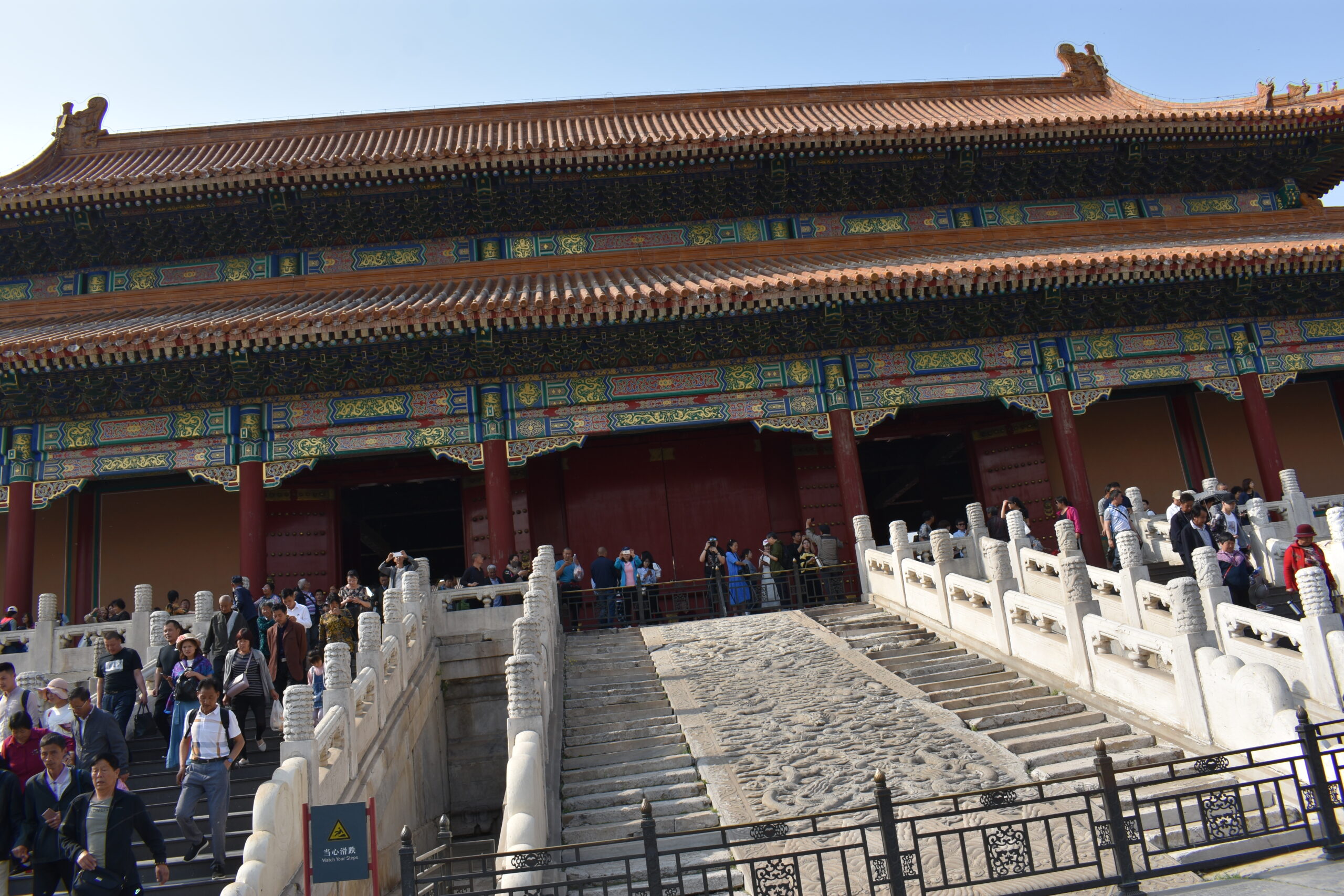
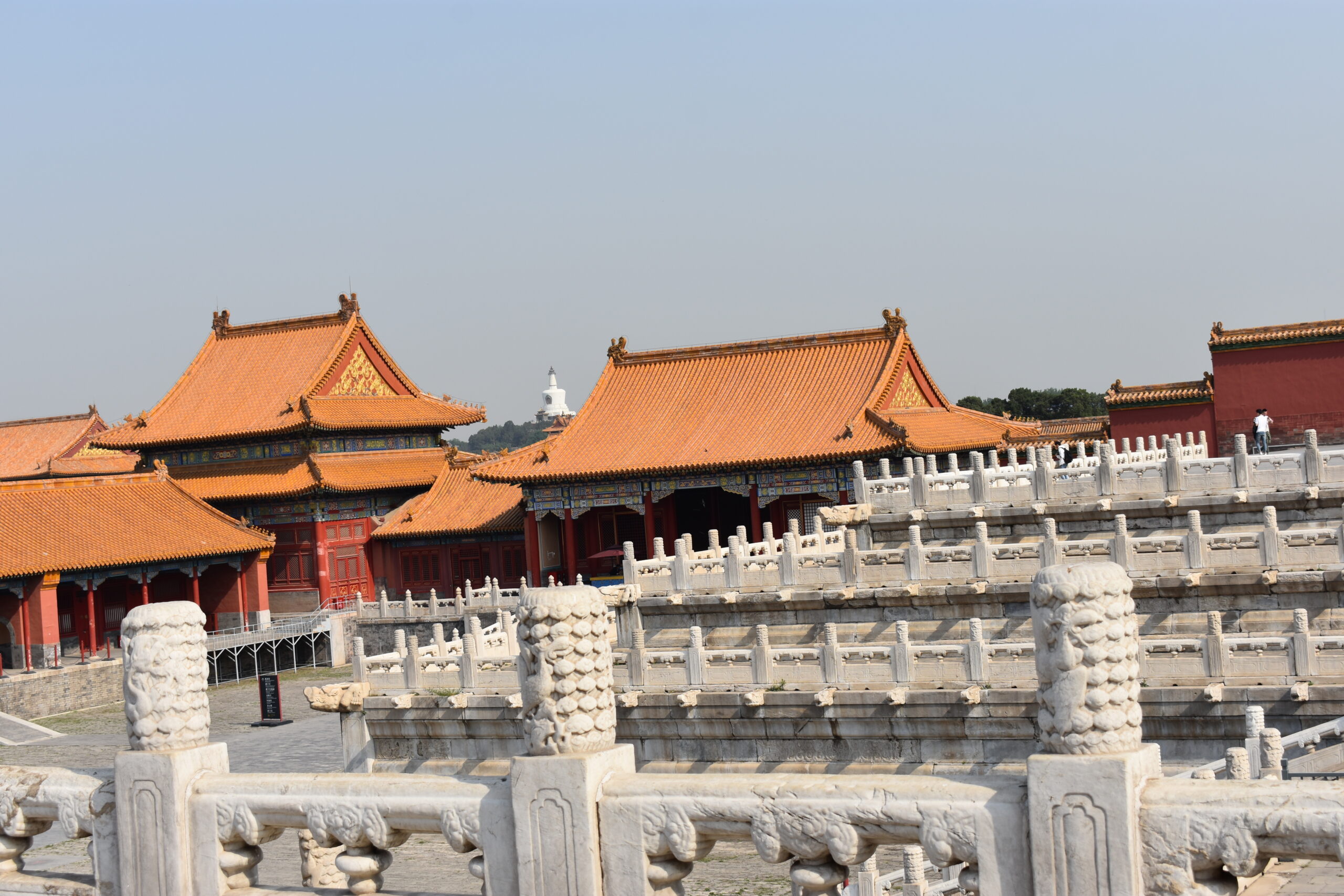
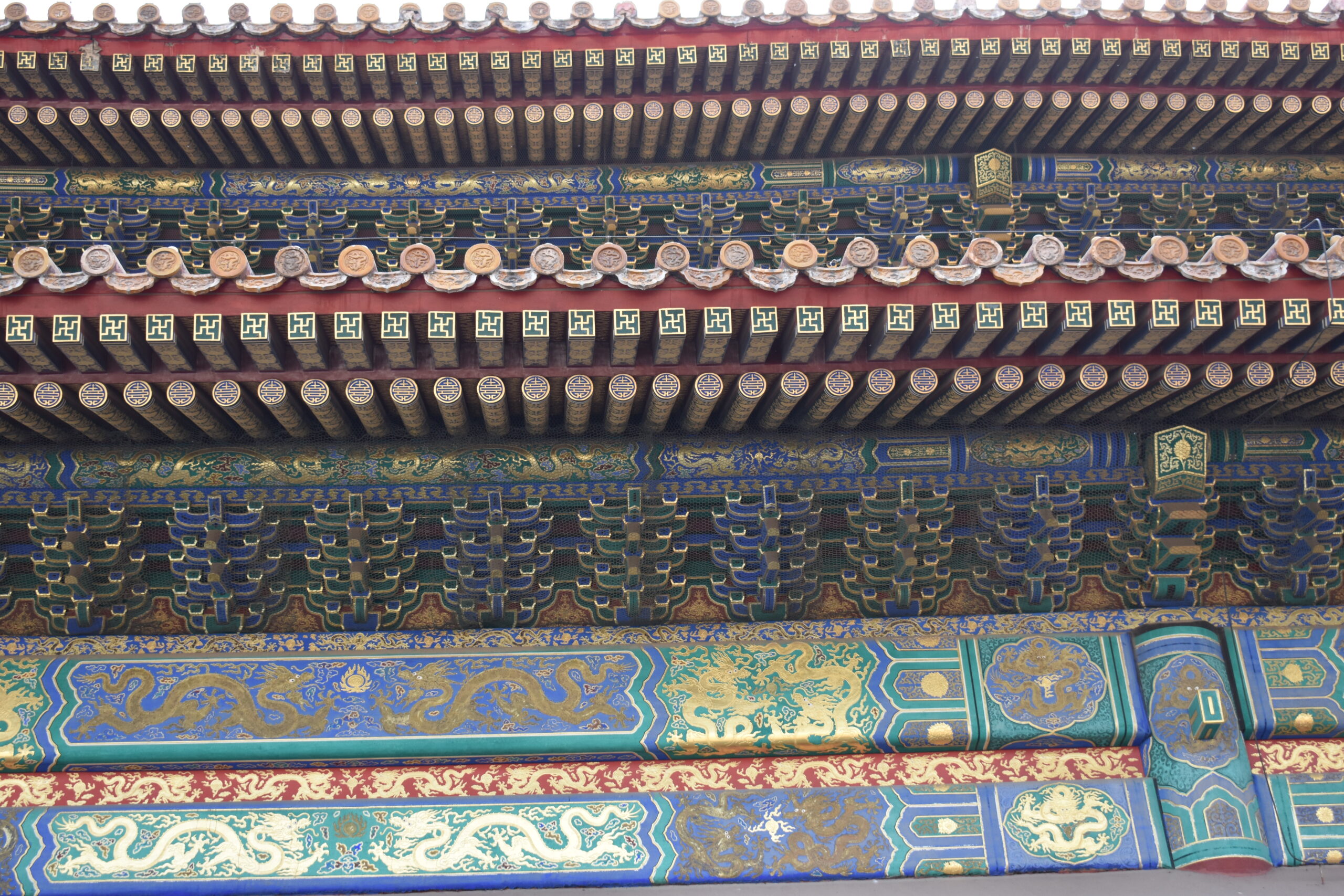
- Forbidden City (and Palace Museum): All of the above pictures. Located in the heart of Beijing off Tiananmen square, the imposing Forbidden City served as the imperial palace for almost 500 years, to the Ming and Qing dynasties. It’s a vast complex of buildings showcasing traditional Chinese architecture and housing numerous artifacts from China’s imperial past. The Hall of Supreme Harmony is one of the most important buildings within the Forbidden City, the largest and tallest hall within the palace complex that served as the primary ceremonial space for imperial events. It symbolizes the supreme authority and power of the emperor. Its architectural details and elevated position on a three-tiered marble terrace further emphasizes its importance. The gates to the Forbidden City are significant. The Meridian Gate leads to the outer court of the Forbidden City, where important ceremonies and events took place, the Gate of Divine Might is the exit gate on the northern side, the East and West Glorious gate provides access to different sections of the palace complex, various halls and courtyards. The moat surrounding the Forbidden City, served as an additional layer of defense for the imperial palace complex. The moat encircles the Forbidden City on all sides except for the southern side, where it is adjacent to Tiananmen Square. In total, 24 emperors occupied the Forbidden City, which was named because it could only be accessed by the emperor, his immediate family, his women and thousands of eunuchs, or castrated male servants, and officials.
- Tiananmen Square: One of the largest public squares in the world, Tiananmen Square is of historical significance. While it became very known to the world outside due to the 1989 protests, its name comes from the massive stone Tiananmen and was the “Gate of Heavenly Peace”, first constructed in 1417 as the main gate to the Forbidden City. The square is surrounded by important landmarks:
- Monument to the People’s Heroes: Built to commemorate the martyrs who sacrificed their lives for the revolutionary struggles of the Chinese people during the 19th and 20th centuries.
- The Great Hall of the People: It is the site of the annual meetings of the National People’s Congress.
- The Mausoleum of Mao Zedong: Here the body of Mao Zedong lies in state. Chairman Mao was a Chinese communist revolutionary, political theorist, and founding father of the People’s Republic of China (PRC). He is both revered and controversial in China’s history, and opinions about him are diverse and complex. His policies included land reform programs aimed at redistributing land from wealthy landlords to poor peasants. Many young people were inspired by the revolutionary zeal and idealism of the Mao movement to eliminate perceived bourgeois and capitalist elements within Chinese society. During Mao’s rule, China underwent significant industrialization and modernization efforts and laid the foundation for China’s later economic growth. He is also criticized for his authoritarian rule, a famine in China, the persecution of political dissidents and intellectuals.
- National Museum of China: This museum houses a vast collection covering Chinese history and art, including artifacts from the imperial era to the present day. It is also just a few steps from Tiananmen square. More about National Museum of China.
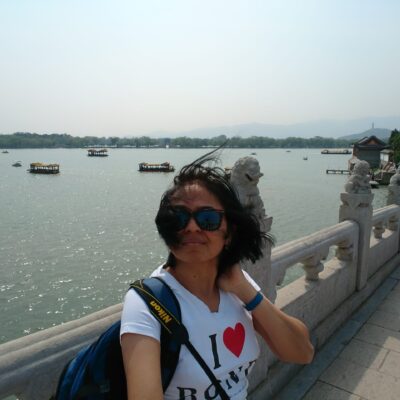
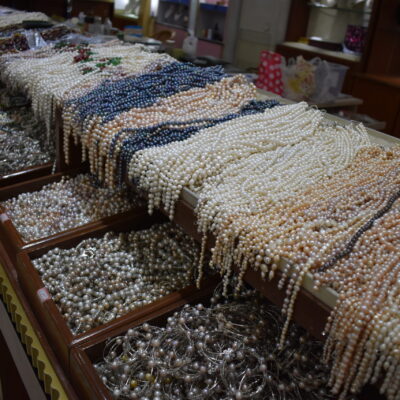
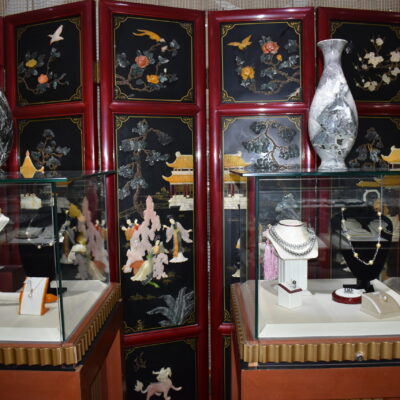
- Temple of Heaven: Another UNESCO World Heritage Site, the Temple of Heaven is a masterpiece of Chinese architecture. It was used by emperors for annual ceremonies to pray for good harvests. The complex includes the Hall of Prayer for Good Harvests, the Imperial Vault of Heaven, and the Circular Mound Altar.
- Summer Palace: This vast imperial garden is renowned for its stunning landscapes, pavilions, and lakes. It served as a summer retreat for emperors and is a prime example of classical Chinese garden design.
- Pearl Market: The Pearl Market is situated near the Temple of Heaven. It is a popular destination for tourists. Bargaining is part of the culture. Other than pearls there is an array of items like clothing, handbags, watches, electronics, silk products, traditional Chinese handicrafts.
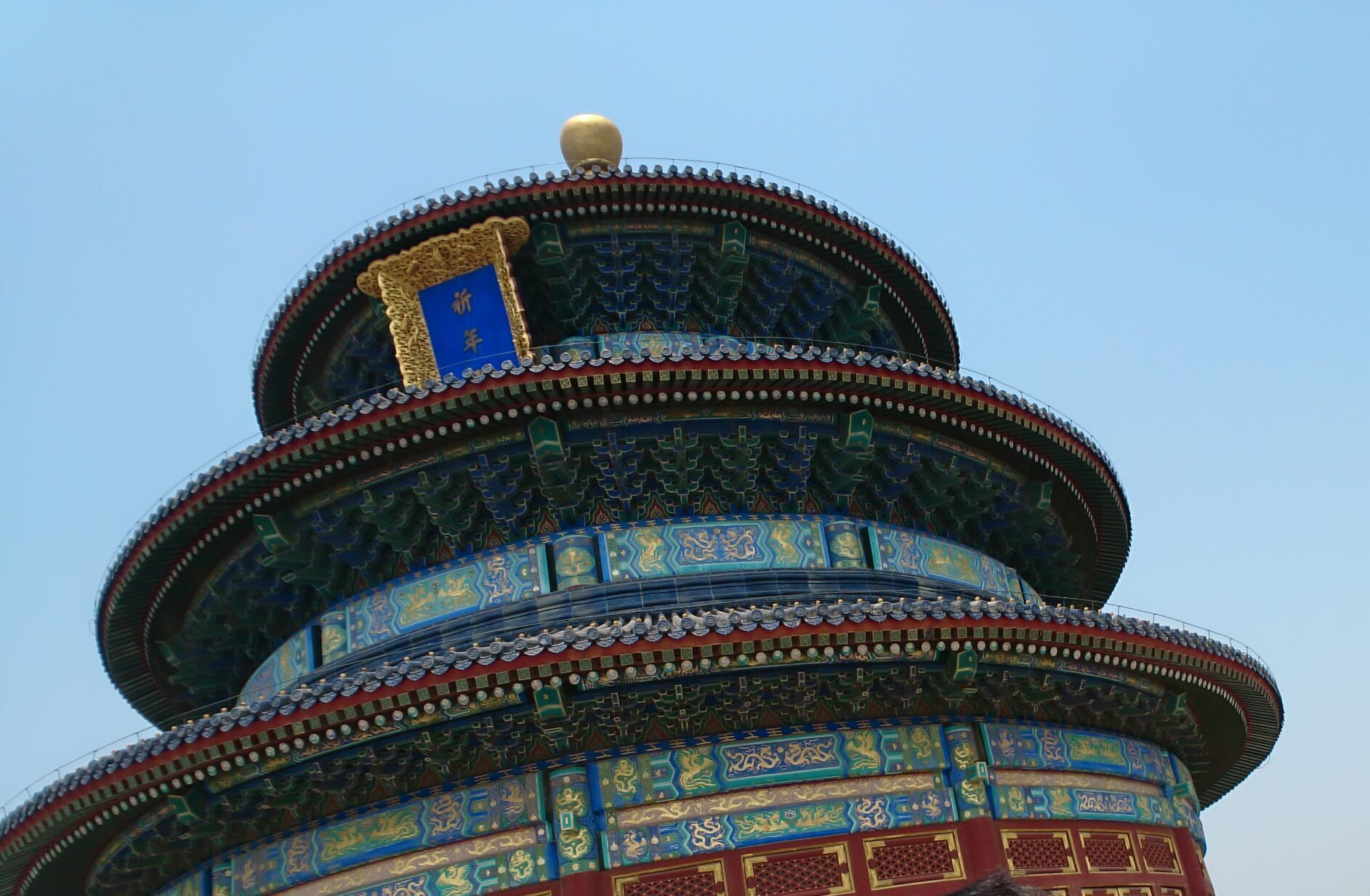
- The Great Wall of China: A UNESCO World Heritage Site, the Great Wall perhaps needs no introduction and is one of the most iconic symbols of China (and the world). Needless to say, a testament to the ingenuity and engineering prowess of ancient China. It was constructed over several centuries by various Chinese dynasties, with the earliest sections dating back to the 7th century BC. The most well-known and iconic sections of the wall were built during the Qin (221–206 BC) and Ming (1368–1644 AD) dynasties. The primary purpose of the Great Wall was defensive. It was built to protect China’s northern borders from invasions and raids by nomadic tribes. The Great Wall is unquestionably a symbol of China’s rich history and cultural heritage. There are several sections of the Great Wall – Mutianyu and Badaling are popular for being easily accessible from Beijing.
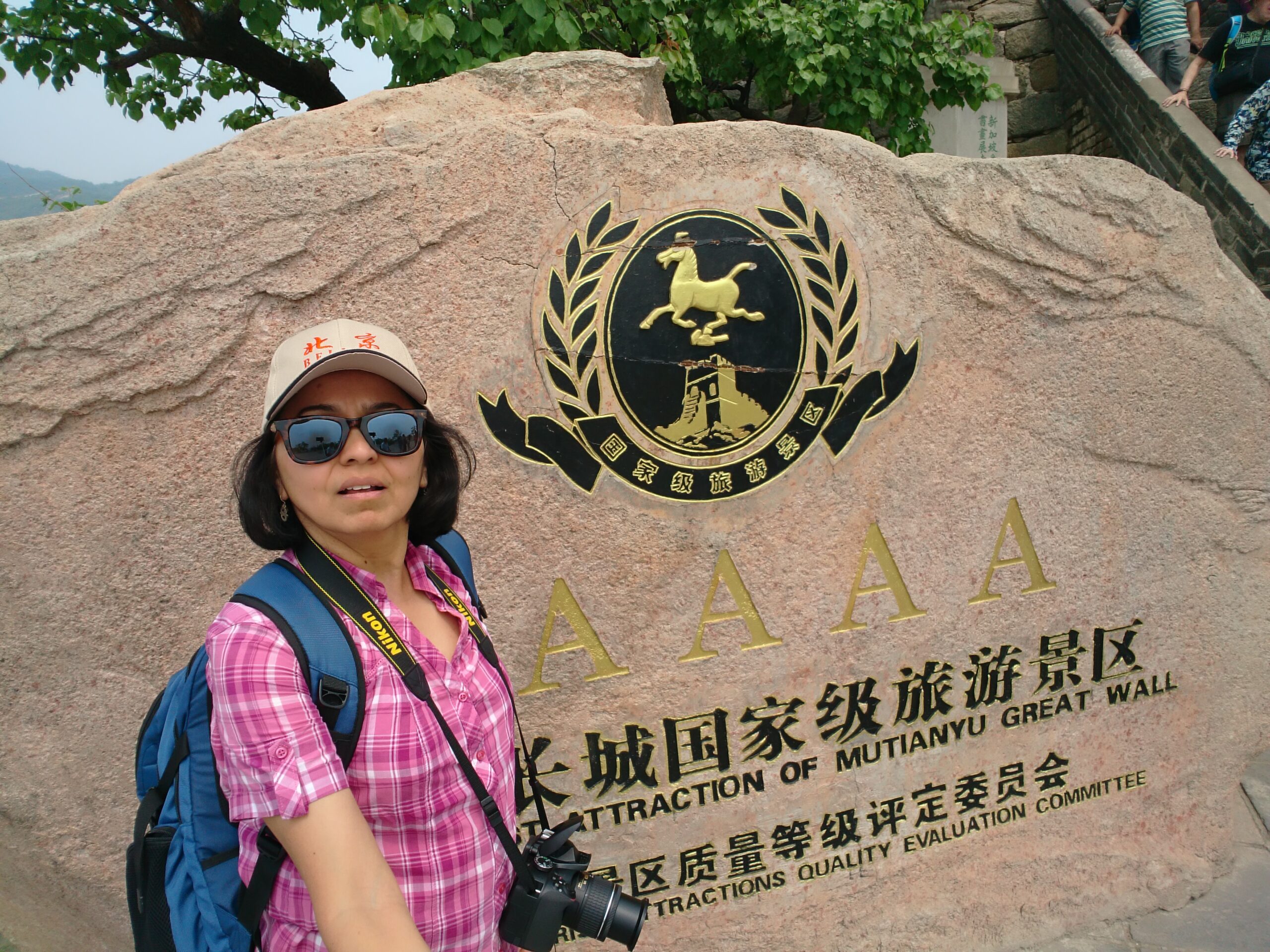
What else in Beijing? If you have time, explore
- Hutongs: Explore Beijing’s traditional alleyways and courtyard homes known as hutongs. Nanluoguxiang and Houhai are popular areas to experience Beijing’s old-world charm.
- 798 Art Zone: Situated in the Dashanzi area, the 798 Art Zone is Beijing’s leading contemporary art district. It’s home to numerous galleries, studios, and cafes, housed in former factory buildings.
XIAN
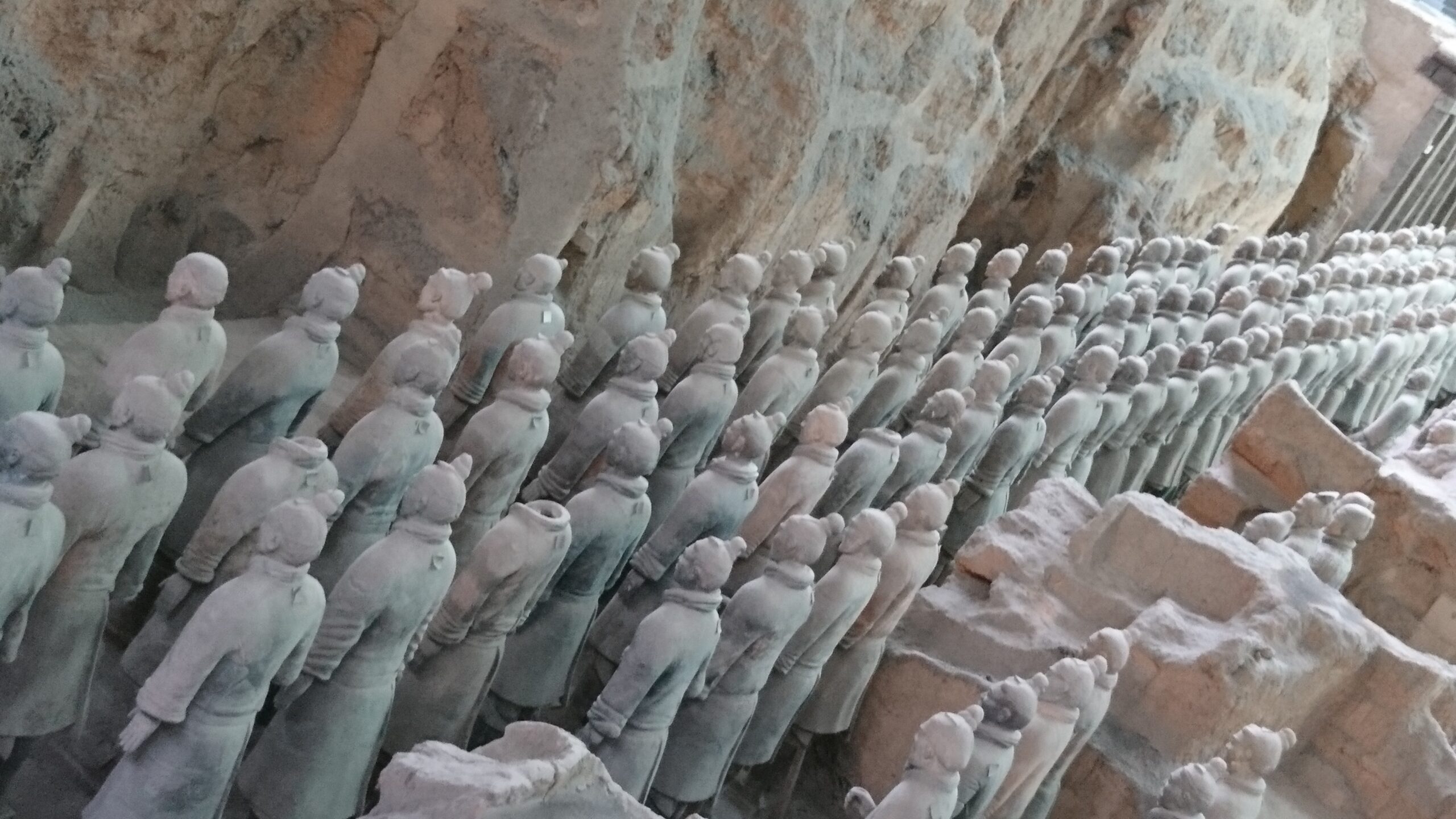
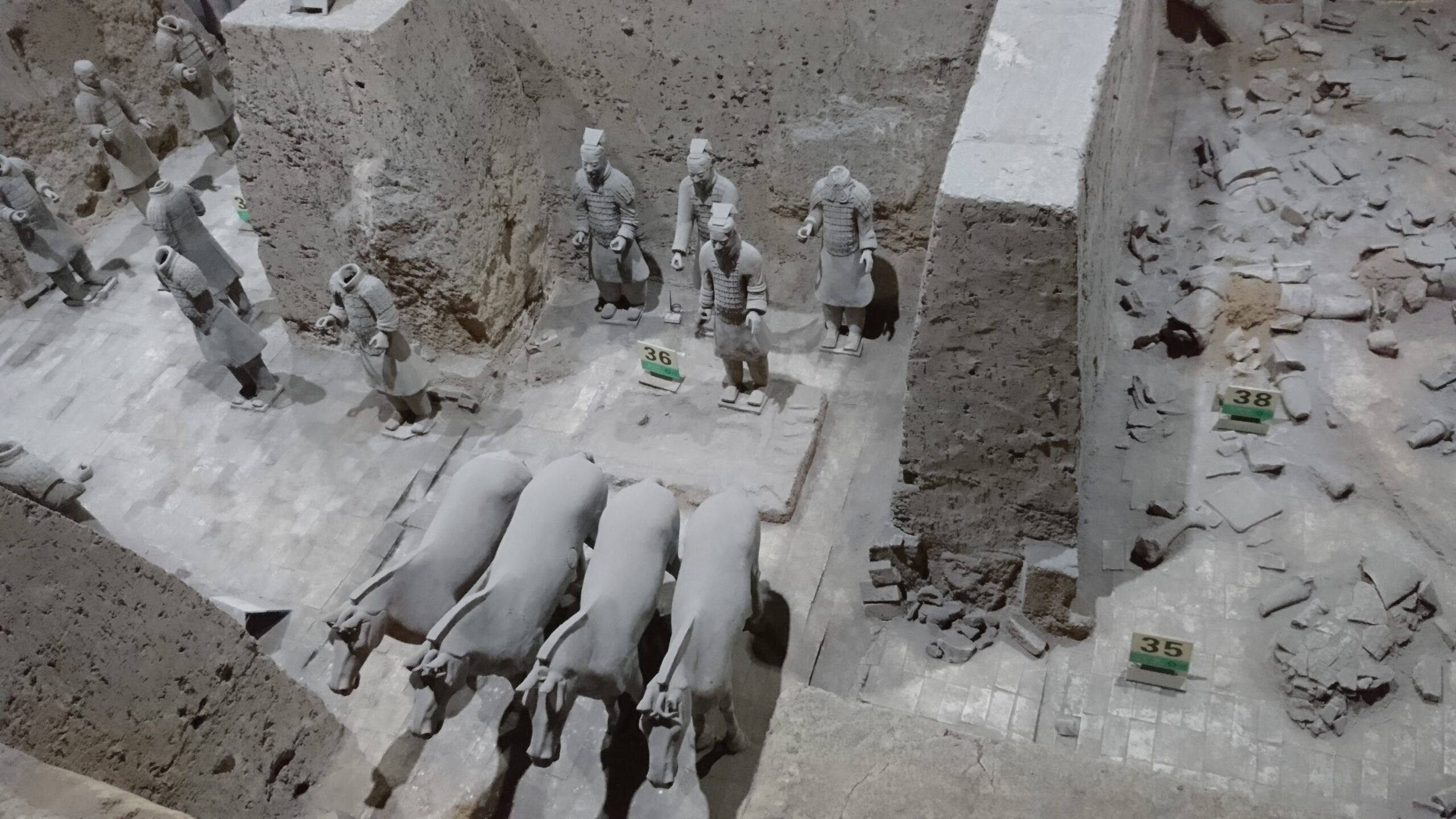
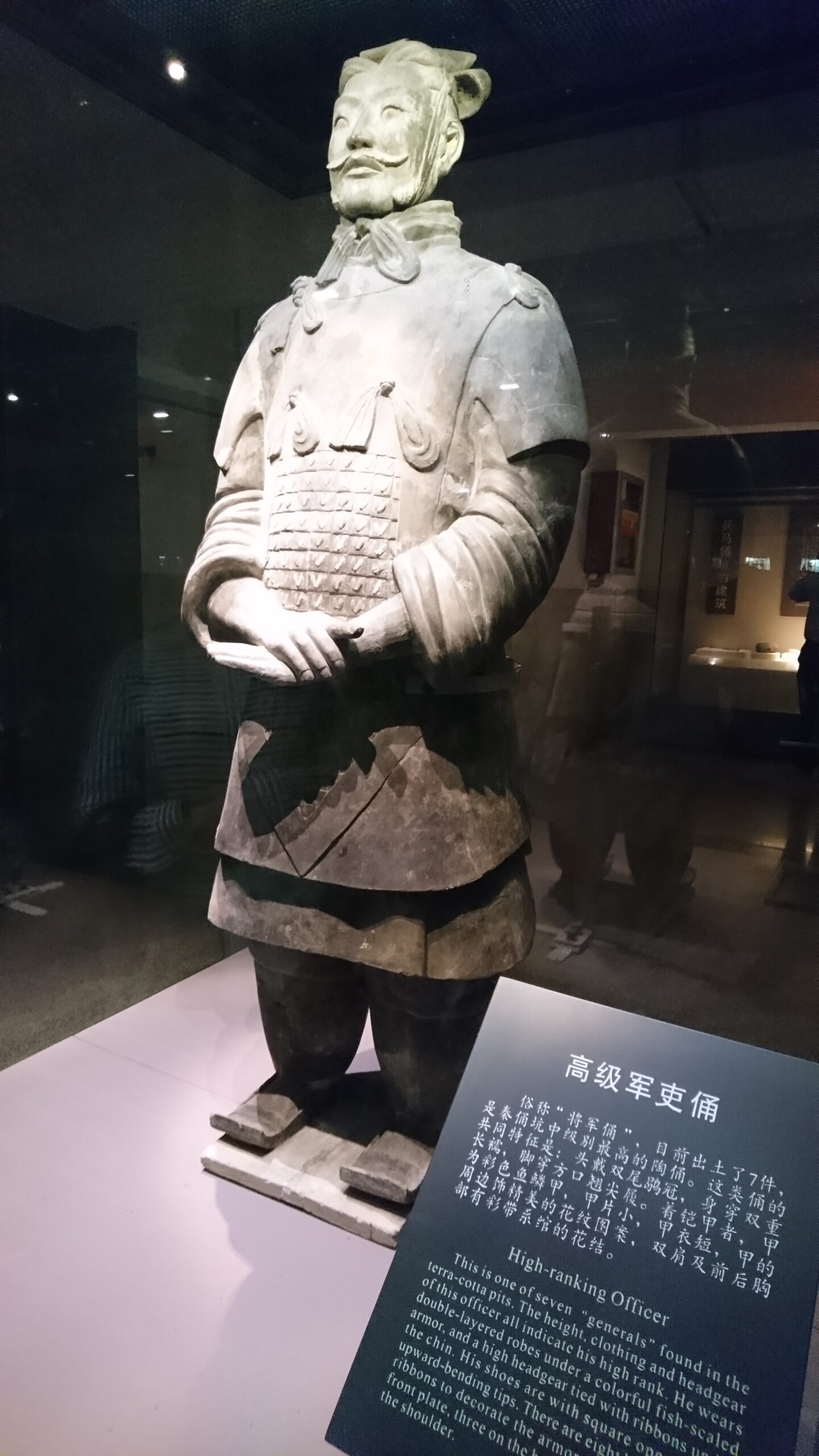
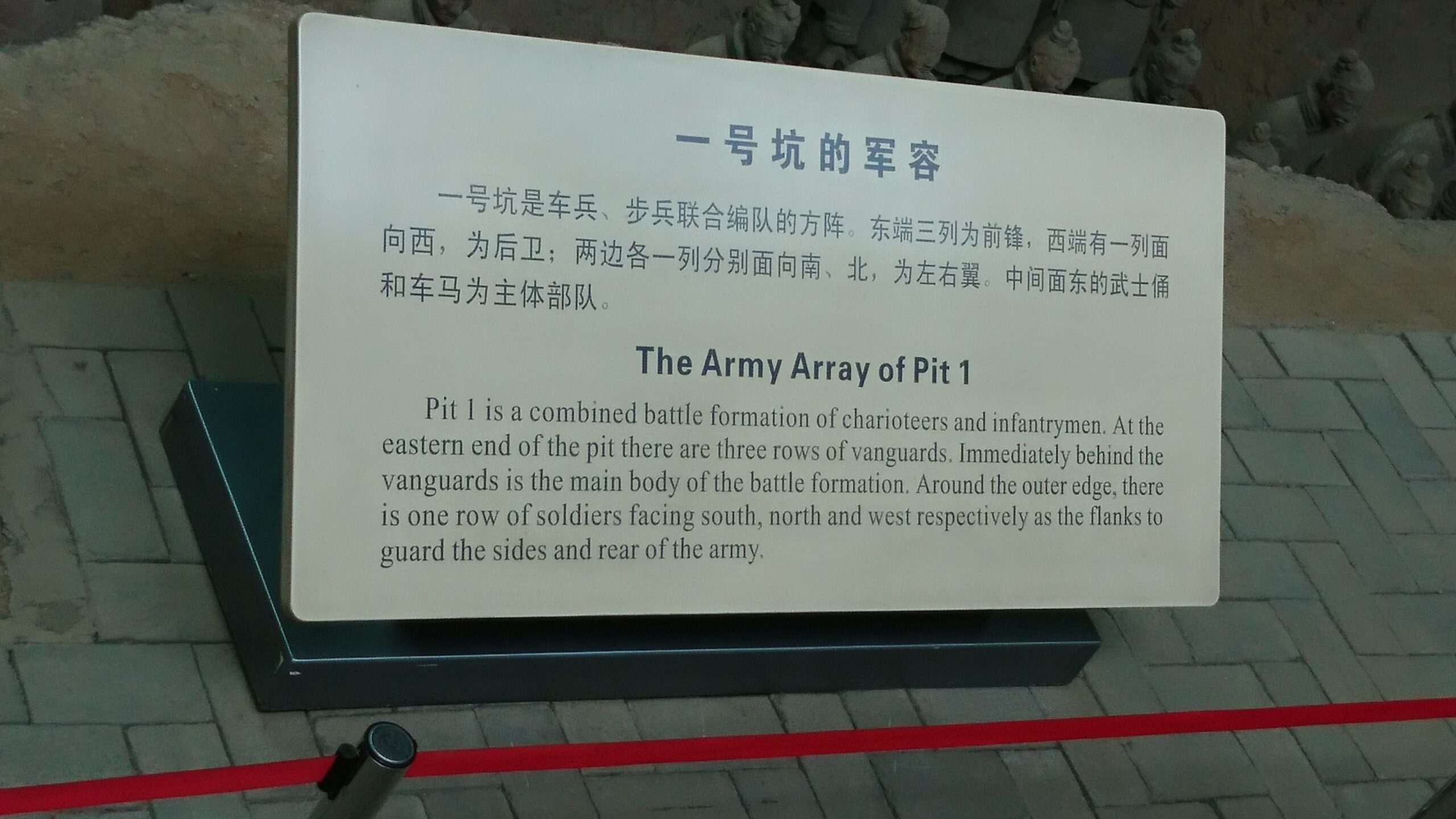
Xi’an, the capital of Shaanxi Province in China, is famous for being the starting point of the ancient Silk Road and for its rich history dating back thousands of years. The entrance into Xian is an imposing wall and the city is inside of it. Xian is a bustling and interesting city that needs a couple of days to explore all it has to offer.
The Terracotta Army (Emperor Qinshihuang’s Mausoleum Site Museum): Discovered in 1974 by local farmers in Xian, the Terracotta Army is one of the most significant archaeological finds in the world. It was built to accompany the tomb of Emperor Qin Shi Huang, the first Emperor of China, during his rule in the 3rd century BC. The magnificent army consists of thousands of life-sized clay soldiers, horses, chariots, and other figures, which were buried with the emperor to protect him in the afterlife and to symbolize his imperial power.
The picture here is of a high-ranking officer.
The sheer size of the museum where the terracotta army is housed, each the size of football fields, is mind boggling.
- Ancient City Wall: Xi’an is home to one of the best-preserved ancient city walls in China, dating back to the Ming Dynasty. Visitors can rent bicycles or walk along the top of the wall to see views of the city.
- Muslim Quarter (Huimin Street): This vibrant neighborhood is known for its bustling markets, traditional Islamic architecture, and delicious street food.
- Big Wild Goose Pagoda: Built during the Tang Dynasty, this pagoda is a symbol of Xi’an. Originally constructed to house Buddhist scriptures brought back from India, it offers panoramic views of the city from its top.
- Small Wild Goose Pagoda and Jianfu Temple: Another important pagoda from the Tang Dynasty, the Small Wild Goose Pagoda is surrounded by the serene Jianfu Temple complex, known for its beautiful gardens and ancient architecture.
- Huaqing Palace: Located at the foot of Mount Li, Huaqing Palace is a historic hot spring resort and former imperial residence. It’s famous for its picturesque gardens, hot springs, and the romantic legend of Emperor Xuanzong and his concubine Yang Guifei.
- Xi’an Bell Tower and Drum Tower: These two landmarks stand at the heart of Xi’an’s old city center and date back to the Ming Dynasty. They were once used for timekeeping and announcements.
- Great Mosque of Xi’an: The Great Mosque of Xi’an is one of the oldest and most important Islamic sites in China. Its architecture blends traditional Chinese and Islamic styles. More information here.
A line of restaurants below in Xi’an.
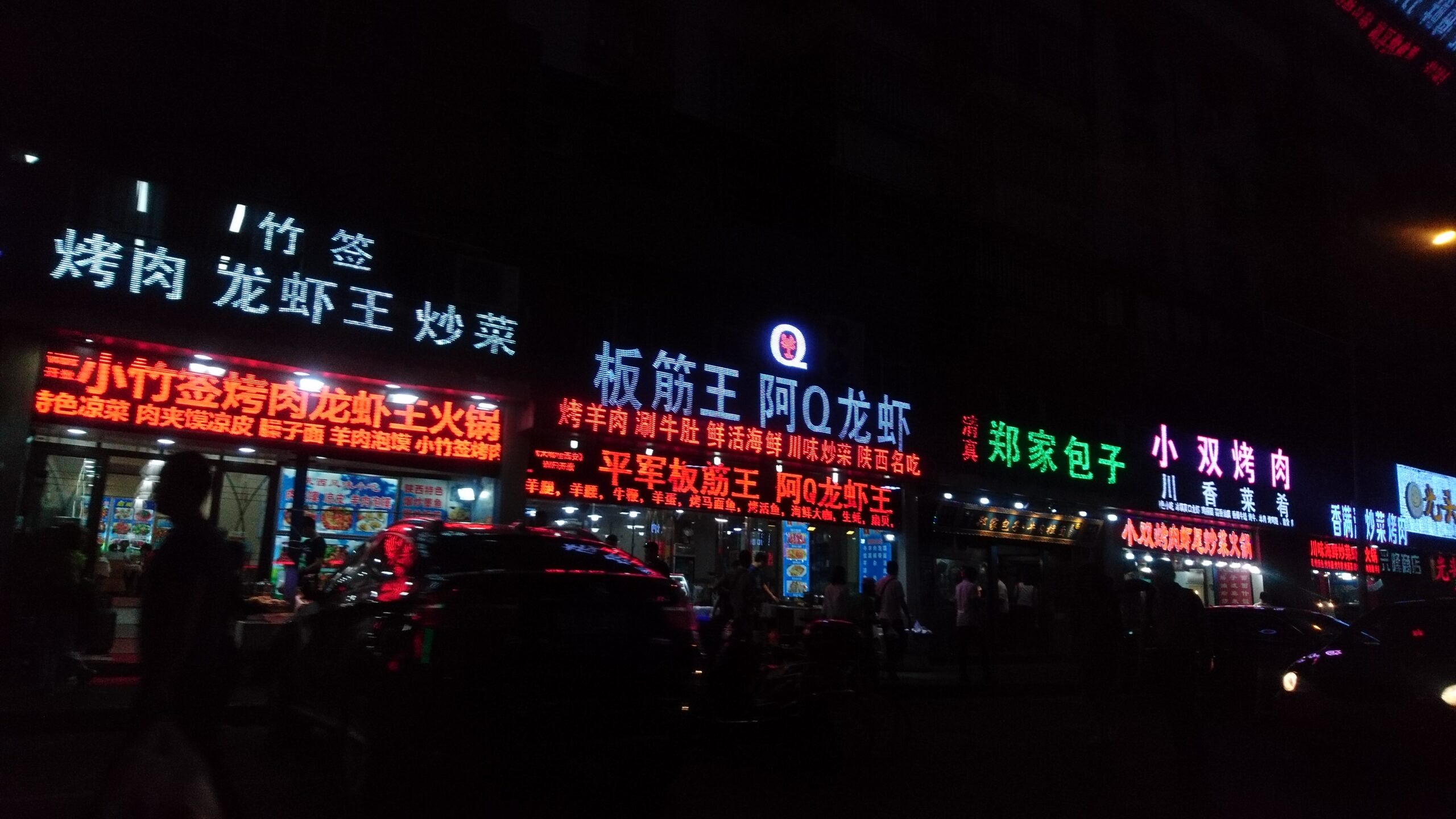
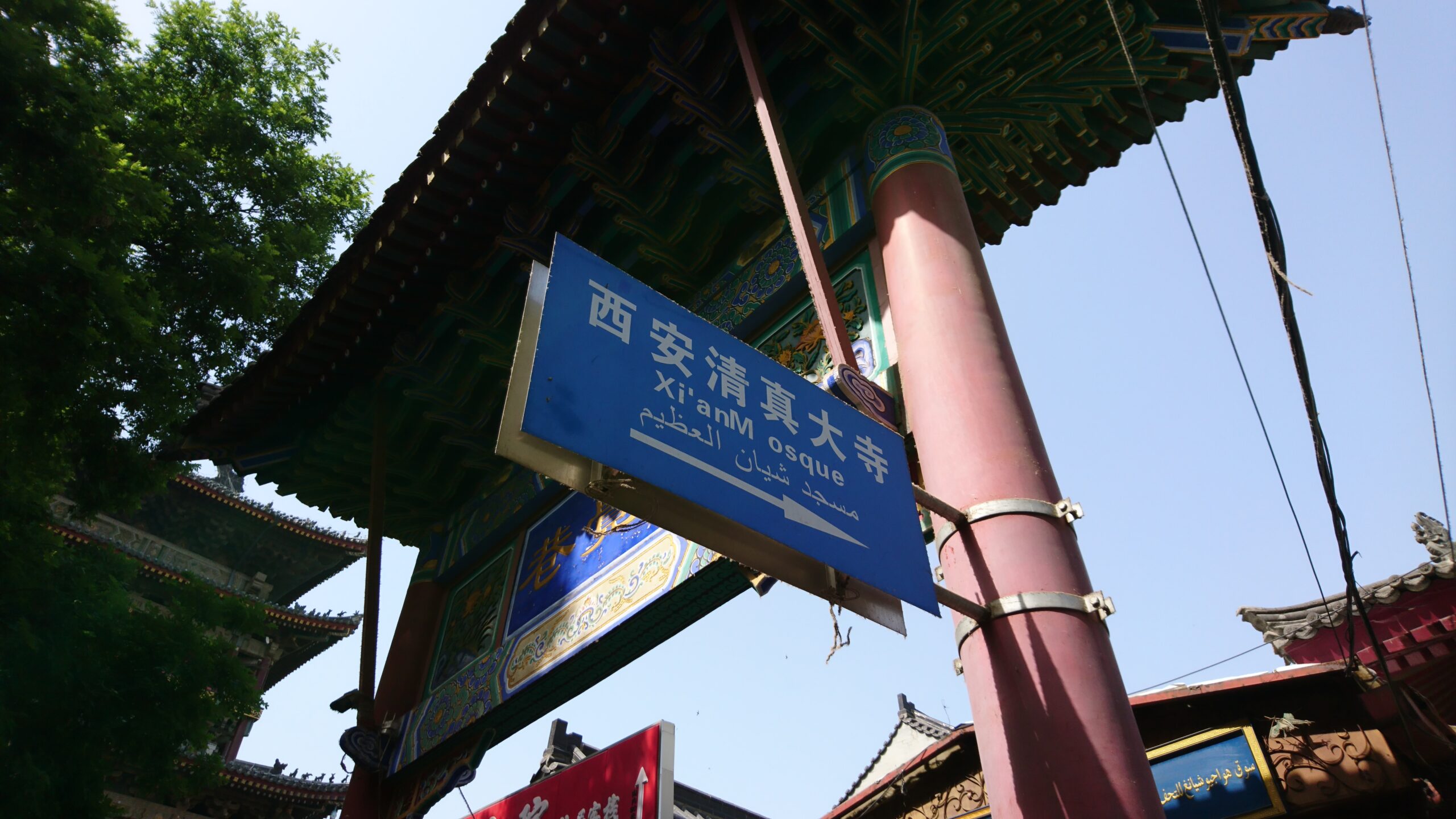
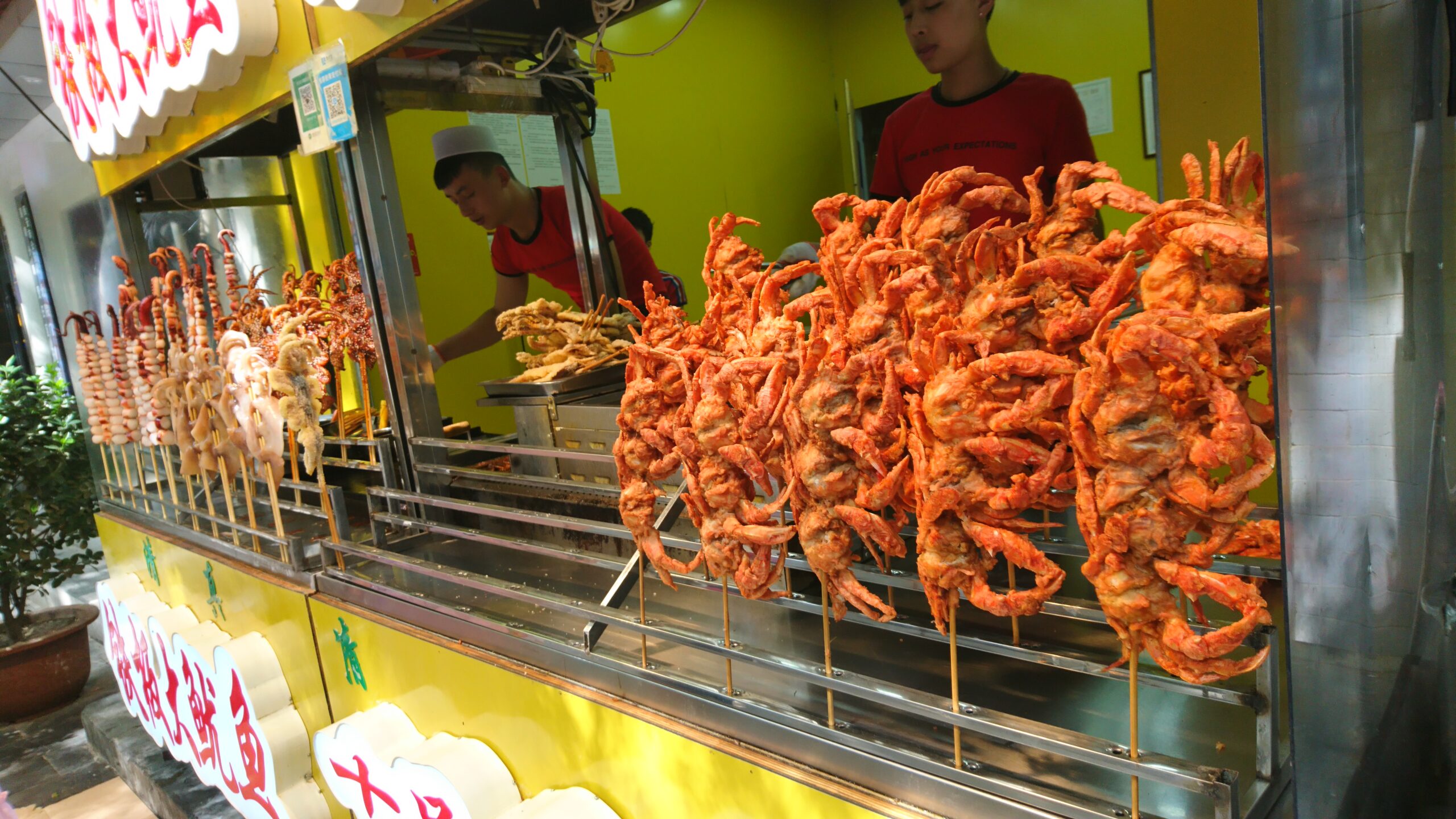
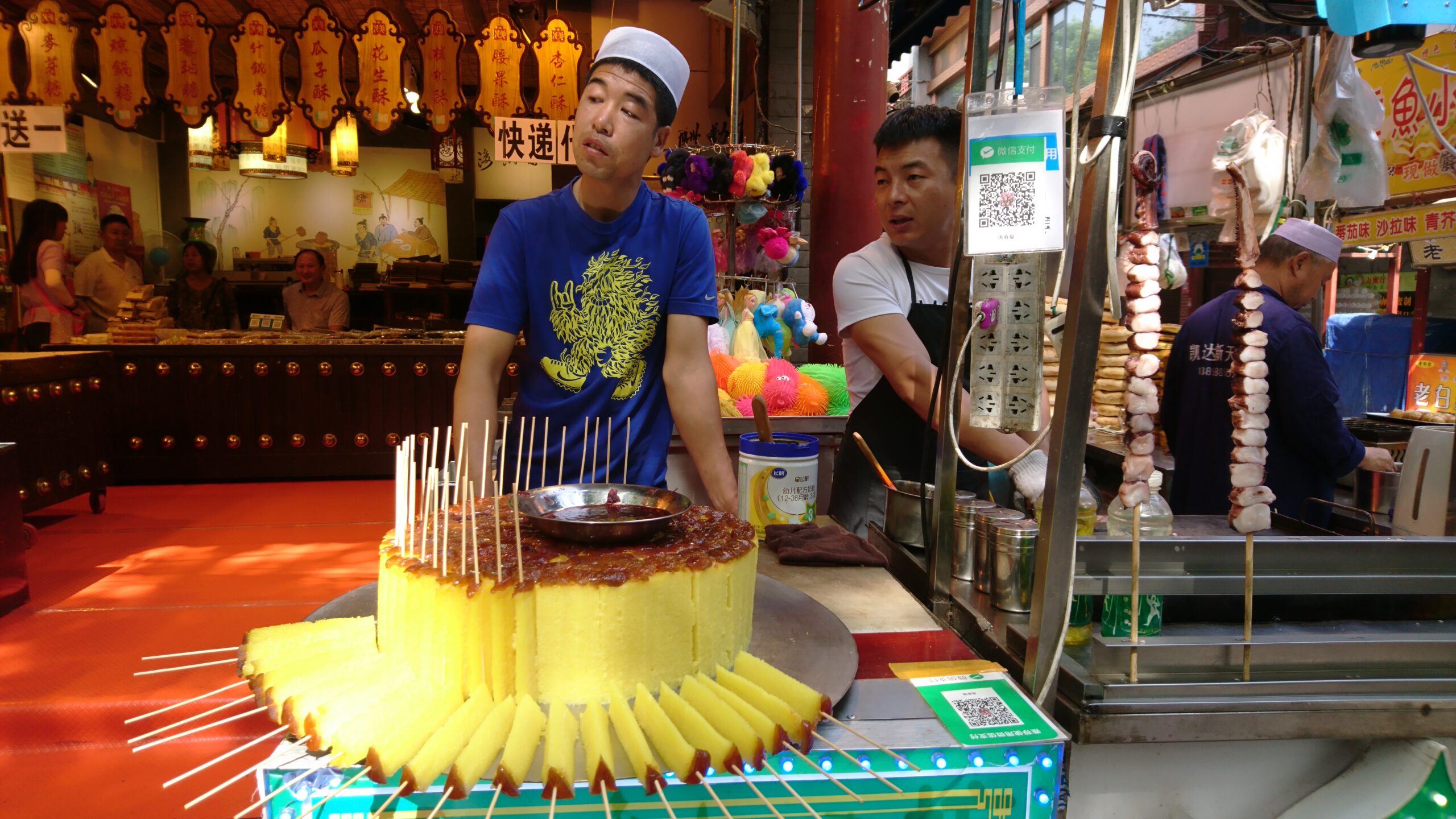
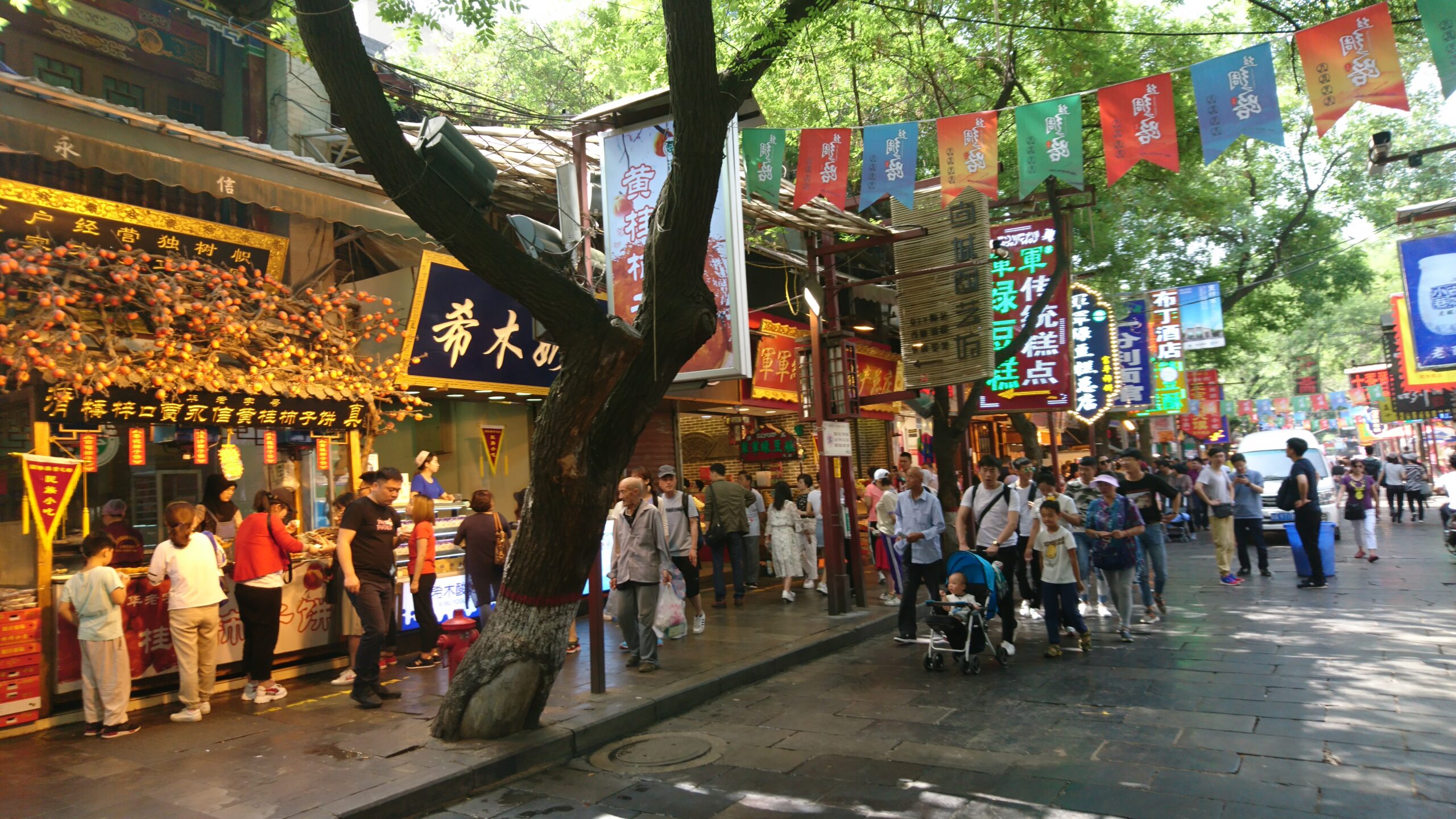
Shanghai
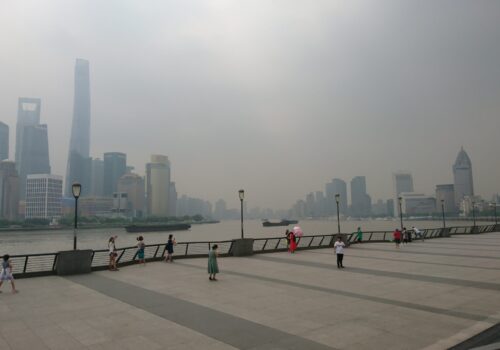
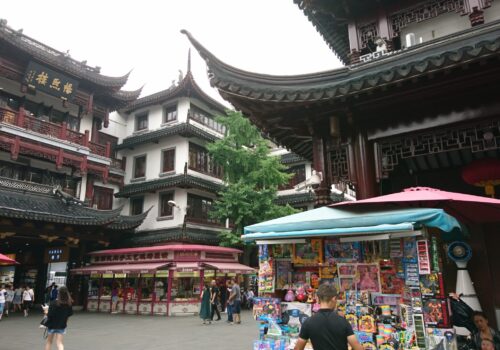
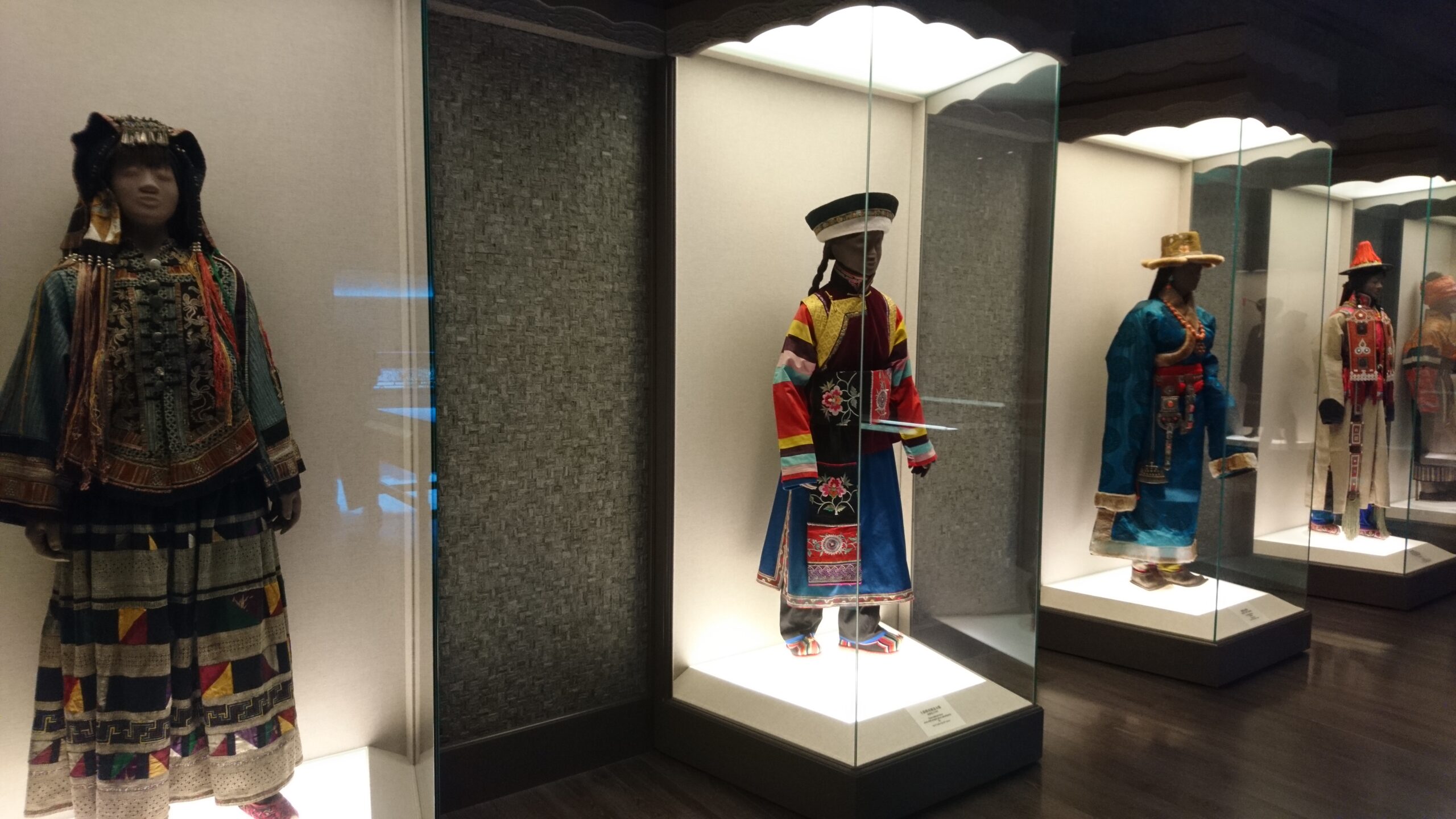
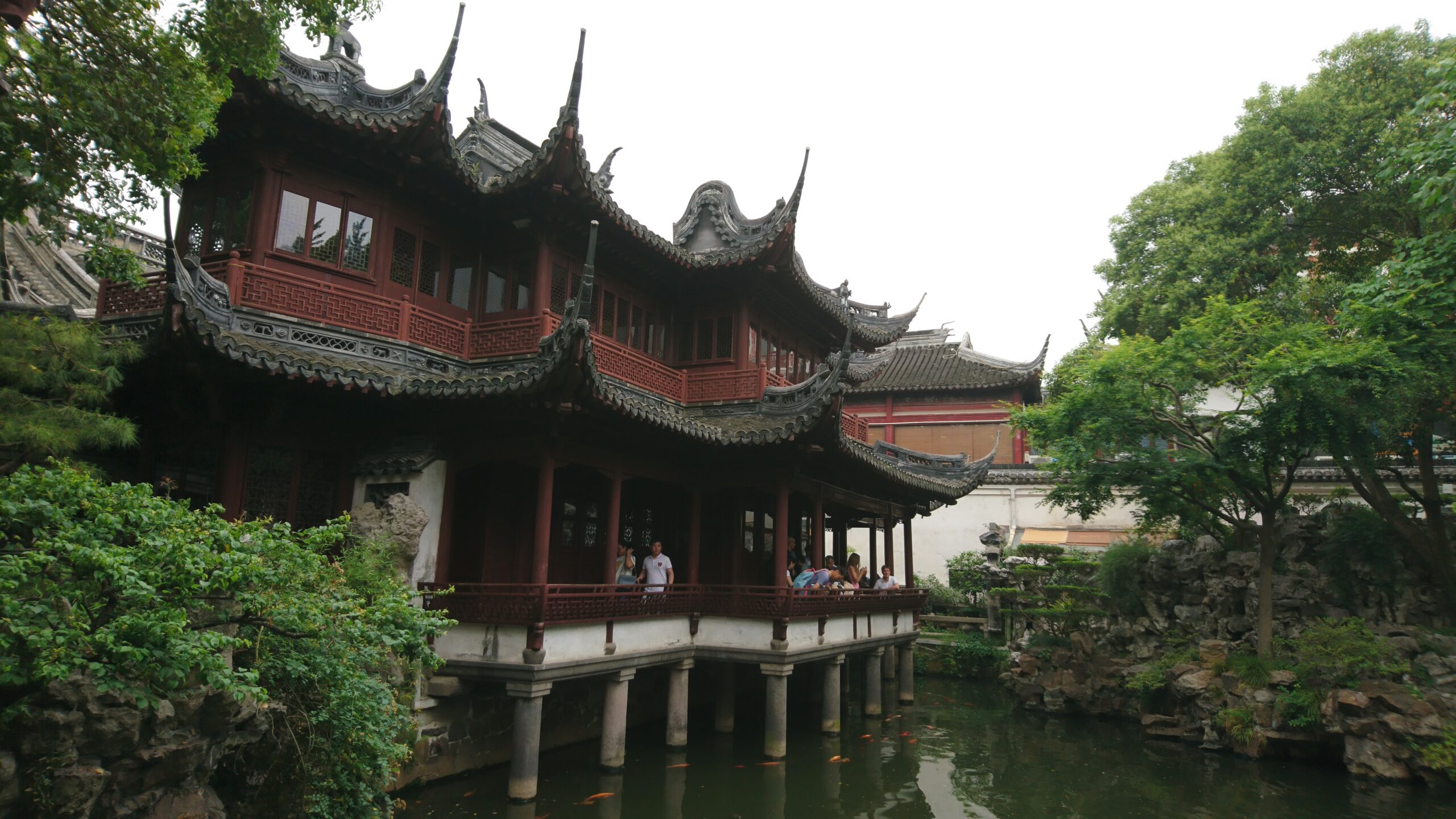
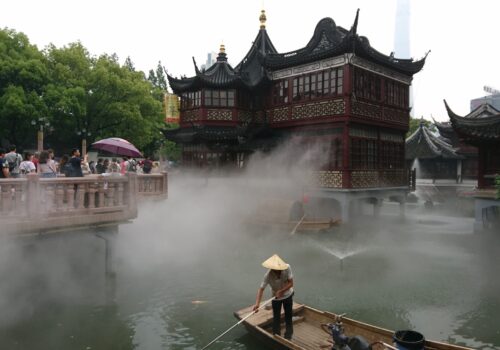
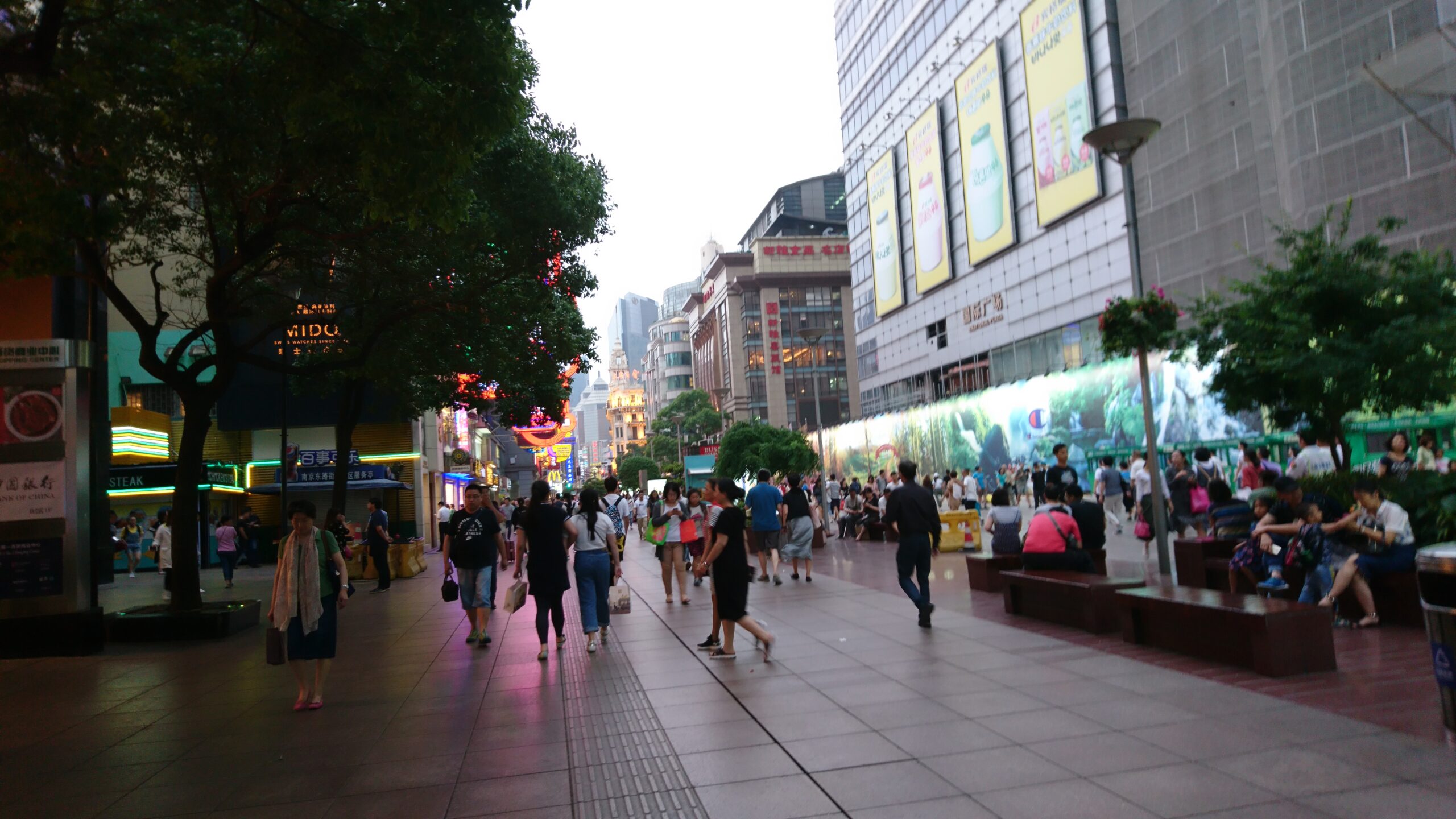
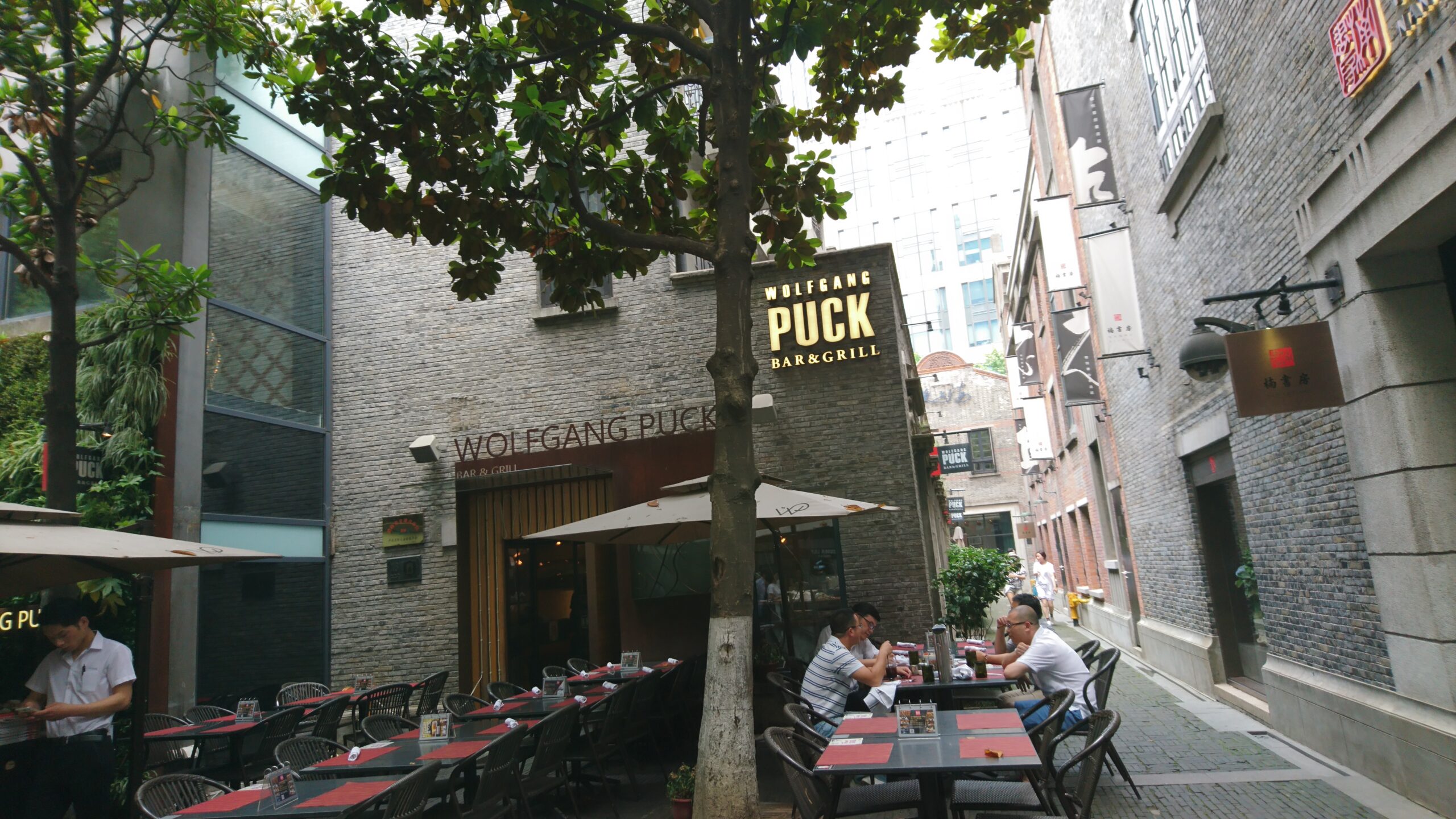
Shanghai, one of China’s most dynamic and cosmopolitan cities, offers a blend of modernity, history, and culture.
The Shanghai Bund: This iconic waterfront area along the Huangpu River offers stunning views of Shanghai’s skyline, with historic European-style buildings on one side and towering skyscrapers on the other. It’s especially beautiful at night when the buildings are illuminated.
Shanghai Tower: At 632 meters, it is the tallest skyscraper in China. Visitors can ascend to the observation deck for panoramic views of the city.
Yu Garden (Yuyuan Garden): This extremely scenic Chinese garden dates back to the Ming Dynasty. It is hard to classify Yu Garden as merely a garden, as it features traditional pavilions, ponds, and winding paths within. A mini city of sorts.
Yu Garden Bazaar: Adjacent to the garden is the bustling Yu Garden Bazaar is a great place to browse and shop for souvenirs.
Shanghai Museum: Renowned for its extensive collection of Chinese art and artifacts, the Shanghai Museum showcases ancient ceramics, bronzes, paintings, calligraphy, and more, this museum of five floors, is simply a must-do.
Tianzifang and Xintiandi: Located in the former French Concessions area, both these places are ritzy and a labyrinth of narrow alleyways filled with boutiques, art galleries, cafes, and restaurants. Xintiandi is one of Shanghai’s most popular tourist destinations and home to some of the city’s most famous and reputed restaurants. The former French Concession area was once reserved for the French coming to settle in Shanghai, so it was called the Paris of the East
Nanjing Road: As one of the world’s busiest shopping streets, Nanjing Road is lined with department stores, boutiques, restaurants, and street vendors. It’s a bustling hub of activity!
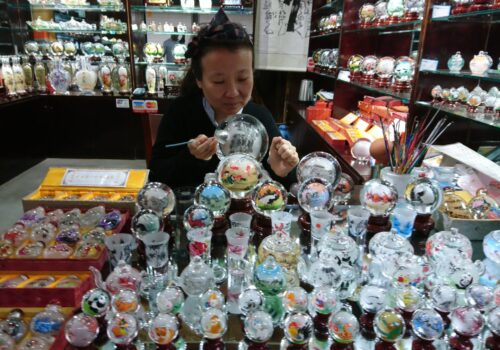
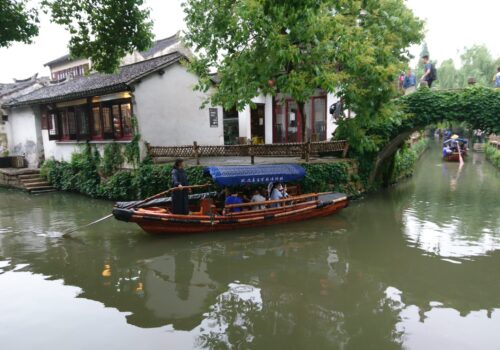
There are several beautiful and tranquil water towns near Shanghai, each offering a glimpse into traditional Chinese culture and lifestyle. You can visit these as day trips from Shanghai. Some of these towns are:
Zhujiajiao: Located about 30 miles from Shanghai, Zhujiajiao is one of the oldest water towns in the region, dating back over 1,700 years. Known as the “Venice of the East,” it features picturesque canals, stone bridges, ancient buildings, and traditional houses. Visitors can take boat rides along the canals, explore narrow alleyways, and visit historic temples.
Zhouzhuang: About 35 miles of Shanghai, Zhouzhuang is one of the most well-preserved water towns in China. It boasts of beautiful waterways lined with Ming and Qing Dynasty buildings, stone bridges, and tranquil gardens. Highlights include the Twin Bridges (Shide Bridge and Yongan Bridge), Shen House, and Zhang House.
Others are Wuzhen (80 miles away), Xitang (60 miles away. It is known for filming of TV shows and movies), Tongli (50 miles away).
In each of these towns there are artists working on their crafts which is beautiful to observe and of course, fall to the temptation of buying it.
Vegetarian Food in China
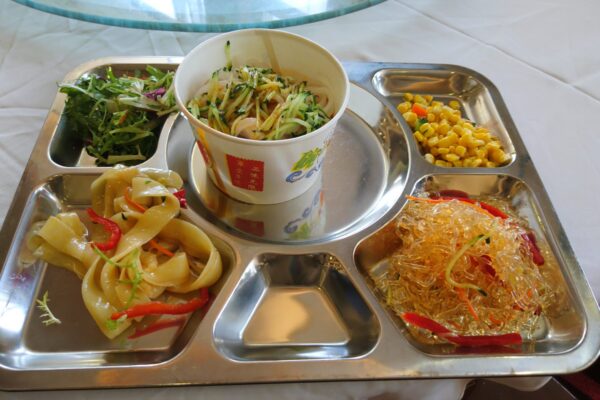
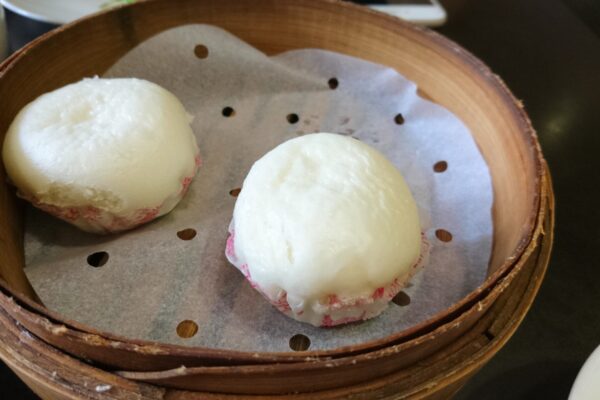
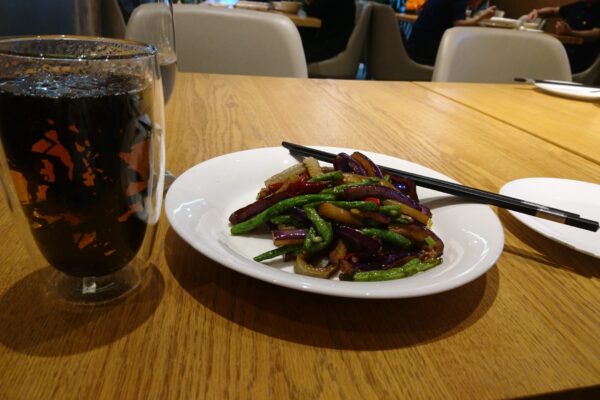
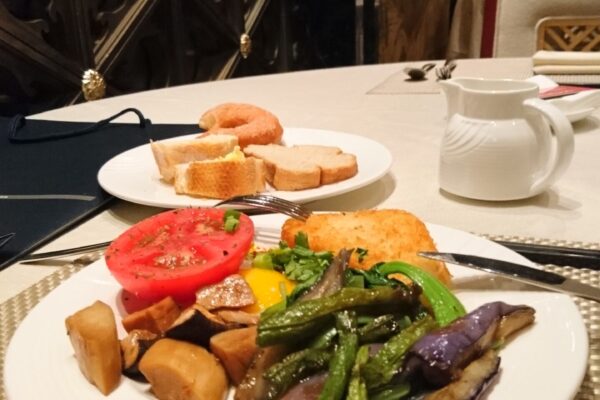
Finding vegetarian food in China can be challenging, especially if you’re traveling to smaller cities or rural areas where vegetarian options may be limited. However, in larger cities and tourist destinations, you can usually find restaurants that cater to vegetarians. I had learned this phrase from the first guide I had – “wǒ shì sù shí zhě” to say “I am a vegetarian.” You can also look for Buddhist vegetarian restaurants but they may not be easy to come by when you are in tourist mode. Many traditional Chinese dishes are naturally vegetarian or can be easily modified to be vegetarian-friendly. Some examples include vegetable stir-fries, tofu dishes, vegetable dumplings, and noodle soups with vegetable broth. I tried the Xiaolongbao (a type of Chinese steamed bun called baozi, prepared in a Xiaolong, a small bamboo steaming basket) in Shanghai when I was with my guide. Baojis can be filled with vegetables or a sweet bean (like the one I had). I did not dare use my google translator to communicate with the vendors when it came to street food. Good to have a supply of nuts and energy bars too. There are many styles of cooking in China based on region. The spices can vary and can be quite (good) spicy at times. The food is fresh and flavorful. Go to the Global Cuisines page for more information on Chinese food.
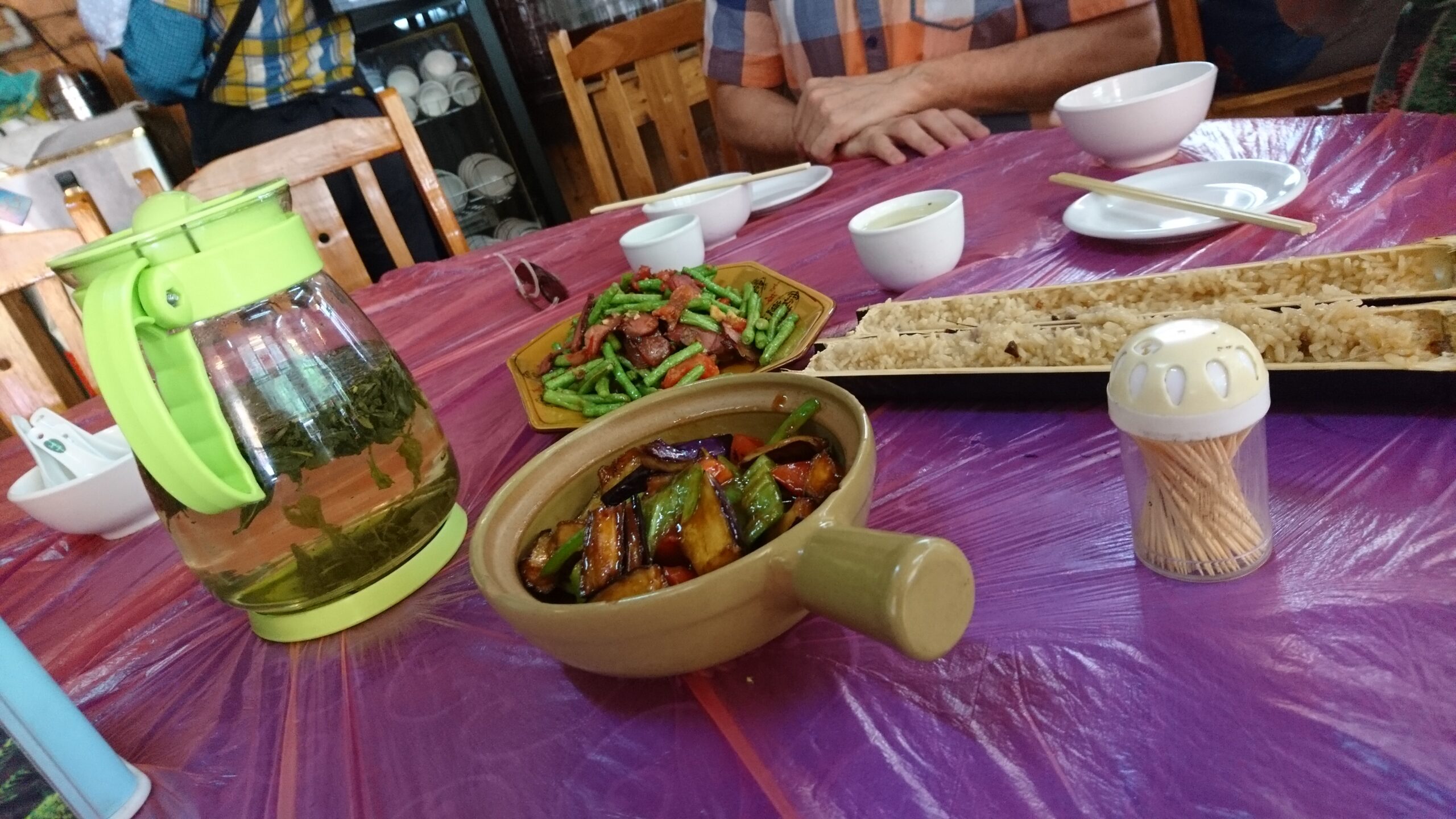
This was one of the best eggplant dishes I have had in a village in Guilin. It came with a side of beans. Interestingly, the rice was brought in a bamboo stick tied with a thread. It had been cooked in the bamboo itself.

Narrative and Pictures of my unforgettable China trip
This section details my first-hand narrative/stories to bring to life my real experiences in addition to what is in the Highlights section!
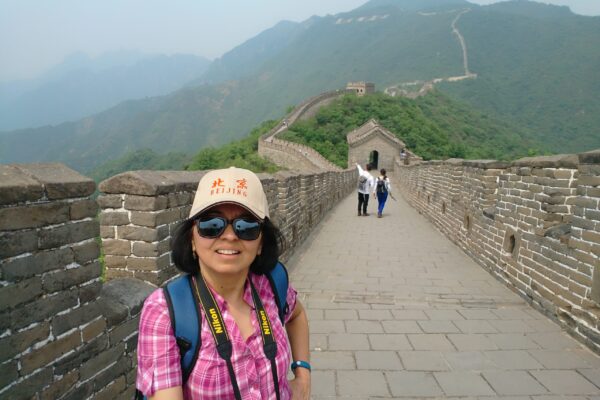
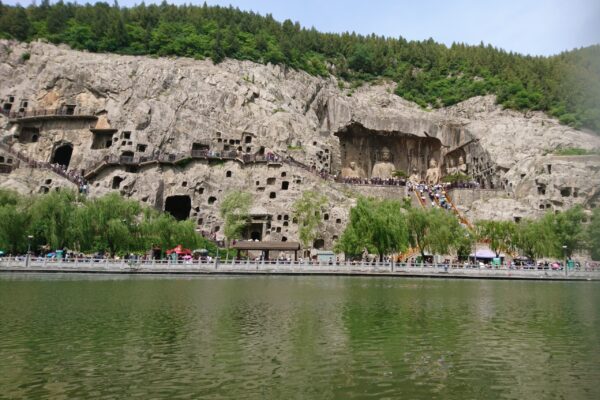
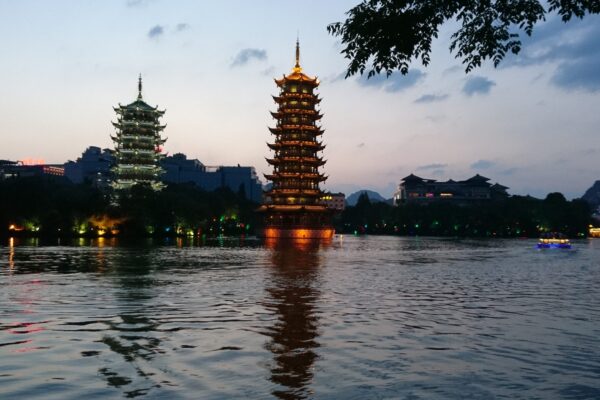
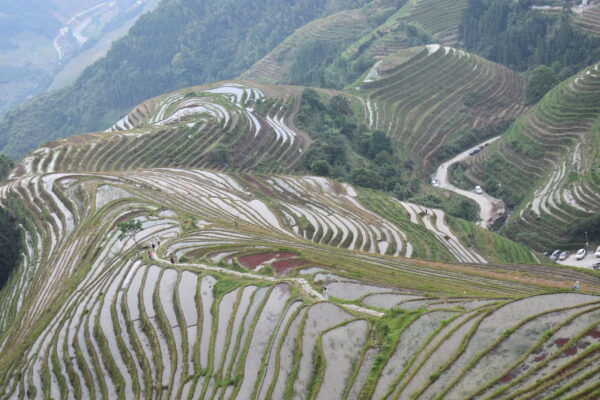
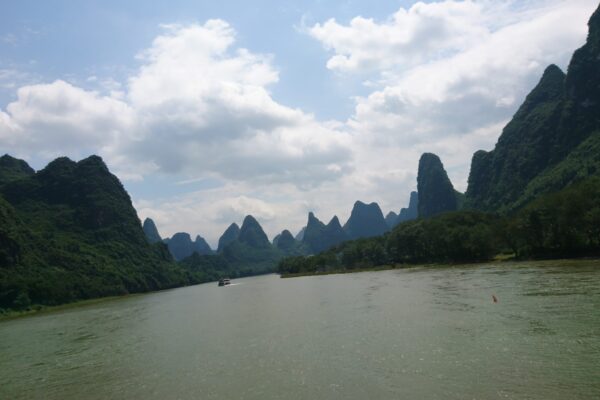
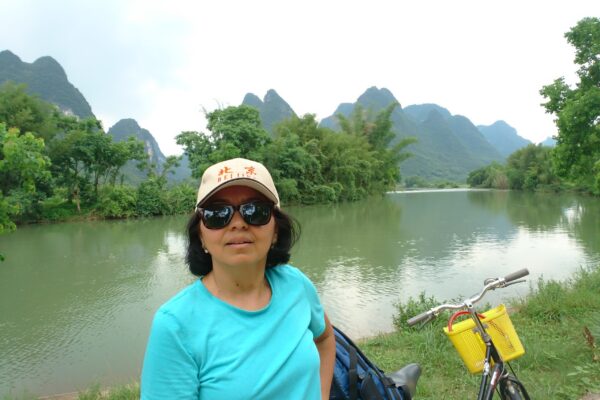
FIRST-HAND NARRATIVE (+ TO OPEN, - TO CLOSE)
China has been a one-of-a-kind trip for me. Partly because I was a bit wary about traveling on my own to some non-standard places off the typical tourist track, and also because there is not one word of Mandarin I would understand if my life depended on it. Anyway, it was one of those trips that got me out of my comfort zone and got me some adrenaline pumping moments :-)! My partner having been to China many times, assured me that it was perfectly safe and I would love it. Except that he wasn’t bargaining for my running off to rural China and all that.
Nothing had me prepared for the sheer magnitude of the Great Wall. I visited the Mutianyu section. The private car driver was an entertaining fellow whose job was to drive me there – he was not a guide and hence spoke no English. We attempted to converse during the long drive and he wouldn’t give up. We spoke through a series of emojis on our phone. I spent about 4 hours walking on the Great wall, and when I came back, he took me to a beautiful lake on the way back to Beijing as an added bonus. Beijing is a city with a lot of hustle and bustle, people jostling each other at times to get into a bus or in crowded train stations, a city of tall matchbox like apartments. Other than its history and the Great Wall, I wasn’t very enamored by it. After completing my Beijing tourist circuit, my driver dropped me off at a train station. Train ticket in hand, I was on my way to my next destination on the high-speed train, to a city called Luoyang which is about a 4 hr train ride from Beijing. I made sure to keep awake and pay attention to the stations so that I would get off at the right one.
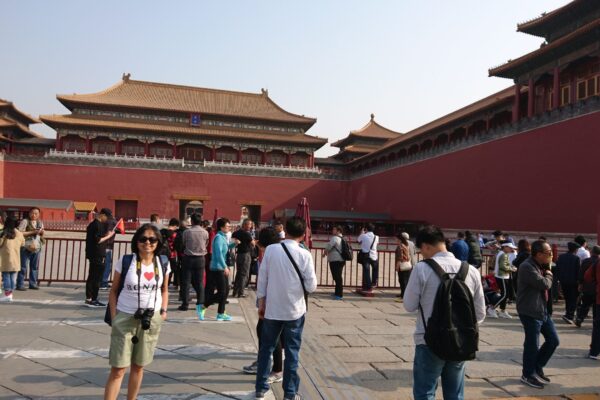
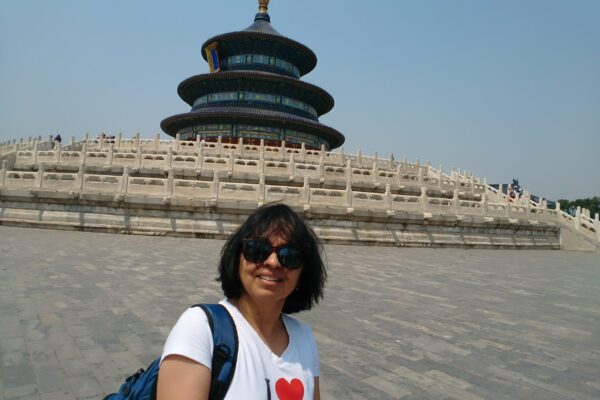
There are myths about the Great Wall and here is one that I had heard of when growing up that has not been true! Debunking the myth.
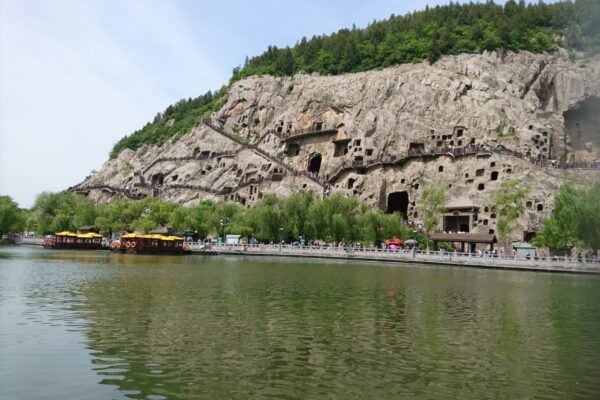
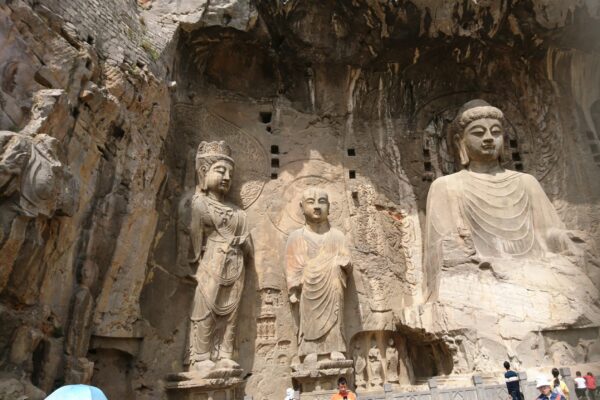
I had picked Luoyang because in the course of my China research, a name caught my eye which took me back to my History class in middle school where our wonderful teacher had repeated certain names so many times, and I had regurgitated the same in multiple tests and exams – it was impossible to erase some names from the brain! So the name Hiuen Tsang rang many a loud and merry bell in my head, and I immediately also recalled the Amar Chitra Katha story from my childhood, about Hiuen Tsang, the scholar who had walked to India during the reign of King Harshavardhana. I remembered the comic book with the face of the king and the scholar with his robes and umbrella. Further research on Luoyang only made it more interesting. It had been the capital of China during the rule of several dynasties, it was the center of learning, and was home to several scholars of the times (another notable one being Fa-Hsien), and a prominent city on the silk road. And best of all, near Luoyang there seemed to be some amazing grottoes. So this place went on to my itinerary. At the train station, I was picked up by the English-speaking guide whom I had hired for the day. He turned out to be such a gem, a deep well of knowledge of the history and stories of the place. The very entrance to the Longmen Grottoes was so tranquil as we walked by the Yi river, with the weeping willow trees providing shade. When we reached the area of the Grottoes, I simply could not help but be impressed and amazed by what was stretching before my eyes for more than a mile. The Guide walked me through the gate that proclaimed its UNESCO site status and then steered me through the history of these Buddhist rock carvings, thousands of them, dating back from 5th century onward. The carvings have been created by various dynasties, there were cave writings of various medicinal herbs, tiny little rock Buddhas to humongous ones, flanked by other sculptures too of Buddha’s disciples, little niches and caves, it’s astounding. The lazy flowing river adds to the scenic beauty of the place. Since I am not writing a History lesson, if interested to know more about these grottoes, please read here.
While we came in by car, we left Longmen Grottoes by boat which added to the serene experience. We next headed to lunch. I found it surprising that the Guide did not sit with me but dropped me in a room that blasted cold air from the AC, and he left to eat in a different room. I was the sole occupant of this big dining room and I wondered if that was because I had asked for vegetarian food and the guide did not fancy that for himself, ha ha!!
The Guide next walked me through the old city of Luoyang where I saw several artists working on the streets. I bought a set of hand-painted teacups. I also bought some artistic chopsticks from a store. A very satisfying shopping experience :-).
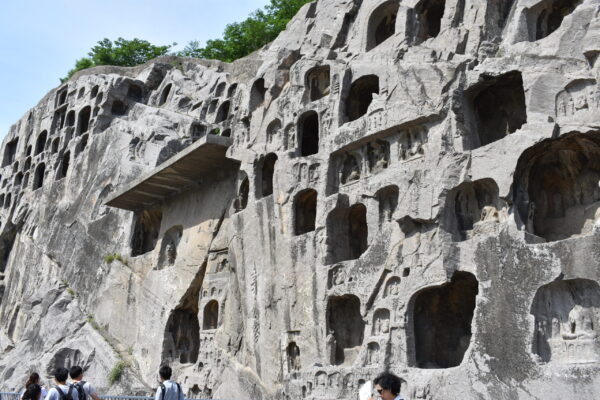
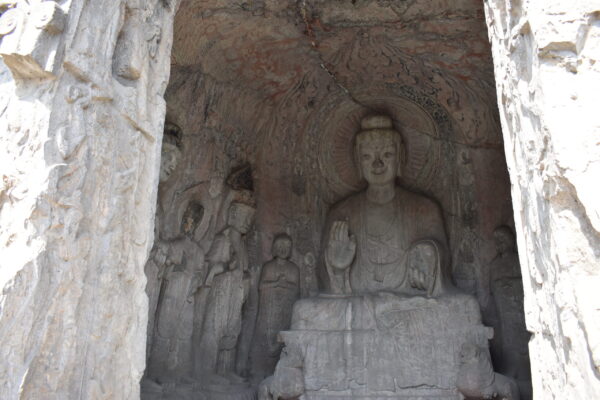
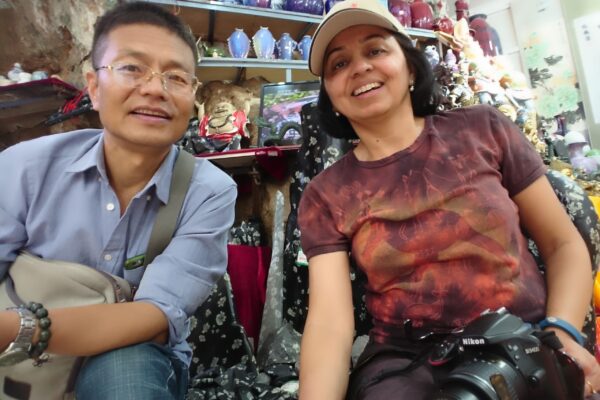
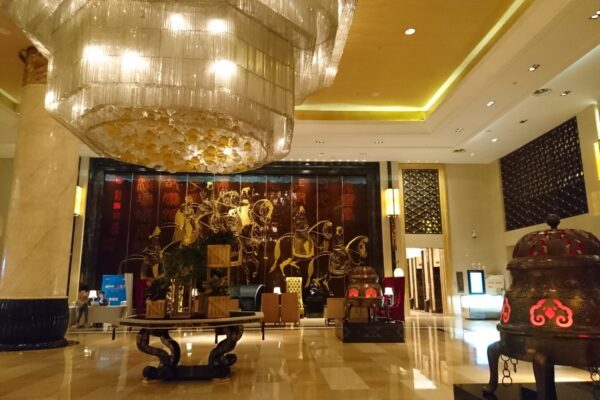
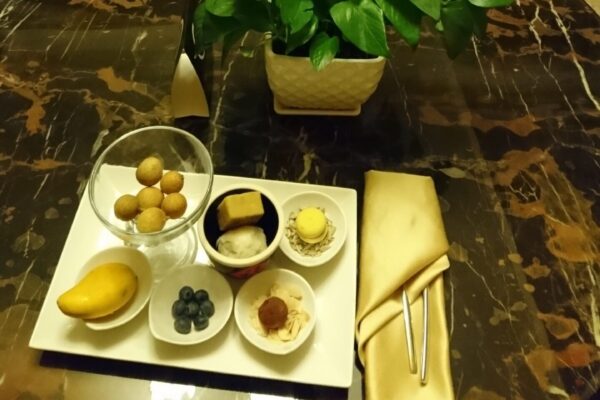
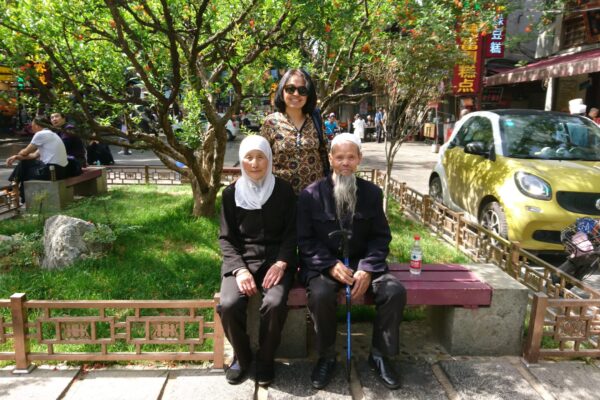
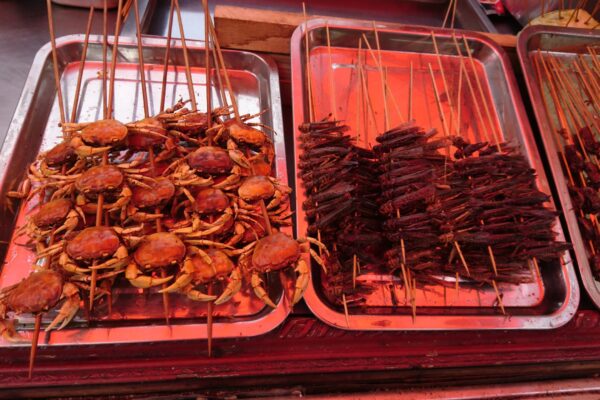
Next, I was dropped off at the station so I could board my train to my next destination, Xi’An, a 1.5 hr journey by high-speed train. These trains that go at 300 km/hr are excellent. There is also a snack and juice served. Sitting next to me on this journey was a Chinese lady who struck up a conversation. She hardly could speak English and so I pulled out my Google Translator to find out what she was asking. We went back and forth with it. Turned out that she was curious about my solo traveler status and that too to Luoyang! I told her that I was traveling from Texas in the United States. Crazily enough, it turned out she had visited El Paso, Texas where she had spent a year to study something! The 1.5 hours whizzed by and she made sure that I got off the train at Xi’An!! The driver I had hired was waiting for me at this station. I always palpitated a little until I spotted my driver in a crowded station. As had been so far, the pickup and drop off drivers could speak no English. It struck me as peculiar that in a new country, I would meet a new person with whom I could not converse at all, but I needed to silently trust.
We entered the walled city of Xi’an which seemed to be a big with slowly moving traffic. Rows of shops, and at dusk there were hundreds of their lights that were coming on. The Hilton I checked into needs special mention here as it seemed to be some kind of a museum more than a hotel! Simply beautiful artifacts everywhere, big and small, high ceiling with mirrors and crystal chandeliers, polished floors and fountains. I immediately wished I was staying here for a week! The check-in desk upgrades me to an executive suite and two young women were dispatched to my service, to fulfil various little duties all the way up to the room. I was squirming at being waited upon thus! The suite was stunning, beautifully appointed in every way and had a living, dining, office and a bedroom with all kinds of decorations and conceivable gadgets. From the bathtub, and the huge clear glass window, a lighted city of Xian would be visible (if one cared to sit in the tub and enjoy the view). I wished I had the family along to enjoy this wuite with. In the living room is a plate of delicate, gourmet goodies and I settle into the welcome of Xi’an.
I won’t describe the magnitude or the incredible terracotta army and museum again since I already have in the Highlights section. After spending a few hours at the museum, the guide walked me through the old city Muslim quarter near which there was also the oldest mosque of Xian. The people here seemed to be a blend of Chinese and Muslim. There was an old couple seated on a bench who were posing for photos with the tourists. The streets in this place were full of food stalls and had I much of what I don’t eat – kebabs of various kinds including scorpions and roaches, sweet-looking cakes and lots of meats of various kinds. The place was a buzzing market. At the end of the day my guide dropped me off at the airport to catch a flight to my next destination which was in Southern China.
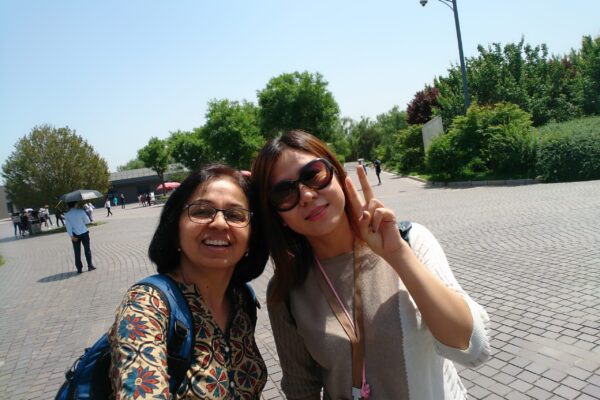
The flight from Xian to Guilin started off great as I was upgraded to first class and I was totally enjoying the food and service. However, just after sometime of flying there began a lot of turbulence and with all the bumps, there was no more food or drink. The nerves got rather shattered too and I was happy to stand on terra firma once it landed in Guilin. I remember my legs having a jelly-like feeling when standing in the baggage claim. Anyway, I was excited to be in yet another place that looked promising, but I knew nothing about other than my reading. None of the people I knew who had visited China had come to these parts and so I couldn’t get any first-hand information. I had picked Guilin because I had forever wanted to see rice terraces on mountains, the kind we saw pictures of in books. Google said I would find the best rice terraces in this part of China. The other reason to be here was because I came across an extremely beautiful town (more like a village) along a river, surrounded by Karst mountains and I could access this place from Guilin. It was important enough to be featured on the 20 Yuan Chinese currency. Southern China has some of the world’s best Karst topography with its limestone peaks and lush vegetation.
I checked into the Guilin Sheraton, another nice hotel (not as opulent as the Xian Hilton though). The next day morning, I was given a packed breakfast by the hotel for an early start, and was picked by a driver. A German couple joined who were also part of the Viator small-group trip I had booked for Longji rice terraces (also called Longsheng, meaning dragon’s backbone). Off we went driving through curvy mountain roads, up and up. Through the mist I could see how green it all was. At times the drive felt too fast but we survived. Once we got to the top and out of the cab, we got the magnificent view of shining silvery rice terraces stretching on and on over the mountains. It was a spectacular sight! We checked out various viewpoints and then the guide/driver gave us a briefing on how to explore on our own and where we would meet back. I took off in one direction and the German couple went a different way, perhaps for the same reason that we wanted to enjoy it by ourselves :-). The terraces, the water canals, the greenery, the sun glinting off the paddy fields, gave a shimmering effect on what seemed like miles of sliced bread. It was beyond the pictures I had seen. I walked up and down the hills and thru a little village, Ping’an, for a total of 2.5 hours, finally getting back to the designated meeting spot. Then it was time for lunch. Joined by the German couple again, we walked past rolling streams and villagers, reaching a thatched restaurant. We sat on one table and exchanged notes on our wanderings of the morning, everyone was in a good spirits. As mentioned in the food section, I simply loved the eggplant item I had here with hot rice in bamboo, and a side of beans. Washing food down with hot tea was a ritual I had got used to everyday. After lunch, we were taken to a “show” put up by the local villagers. Singing, dancing and most interestingly, a hair-washing ritual that they demonstrated to us. We were told that these folks have never cut their hair and they have a certain ritual of washing their long-long hair. After the show, we walked through the village and were solicited to buy various knick-knacks. The only tourists I pretty much saw were some European backpackers. No other type of tourists and no locals. After the crowds of Beijing and Xian, it was a welcome relief! By the evening, we were back in the city of Guilin. After freshening up and a bit of rest, I decided to go out for the evening. It was such a serene walk by the river, on a shady green and wide boulevard until I reached a bustling part of town. More than one band was playing in different spots, lots of people enjoying the balmy evening and the music. Here, in a huge lake there also rose two Pagodas, the Sun and Moon Pagodas, one silver and the other gold, completely lighted up. What a lovely sight! One could go into them but I preferred sitting by the water and watching them glow. Back to the hotel at night, I hit the sack.
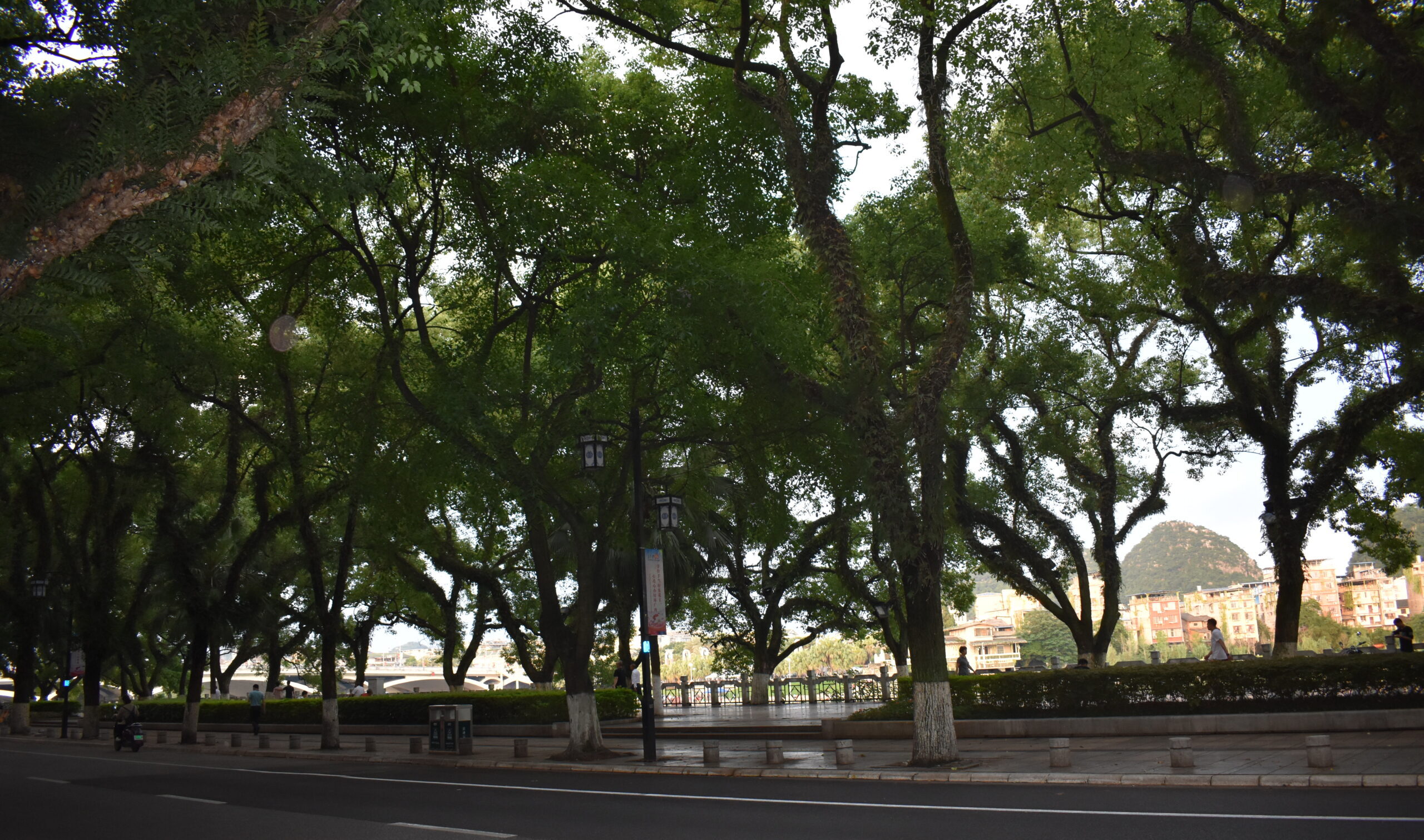
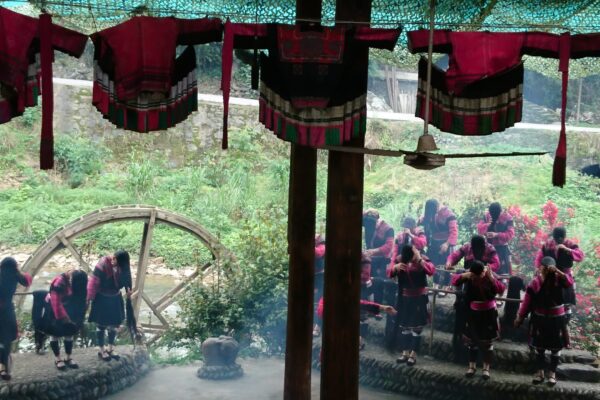
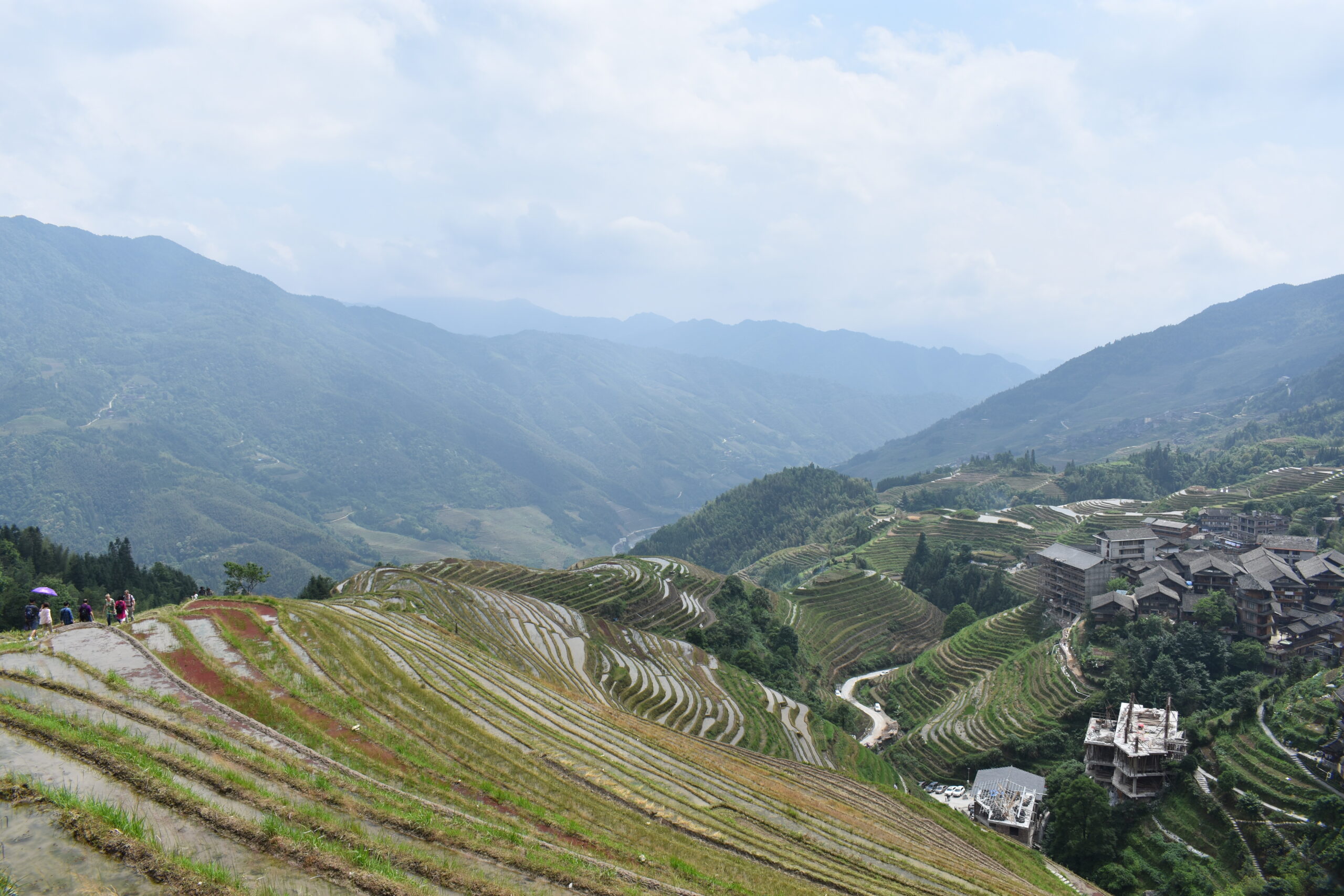
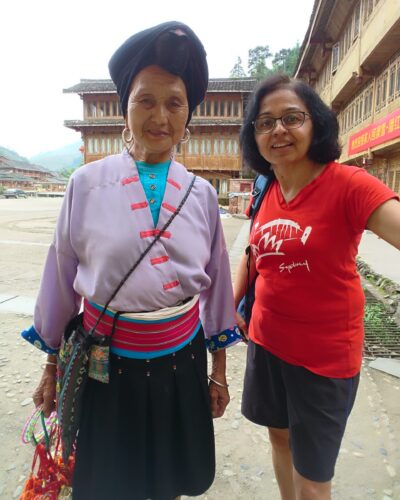
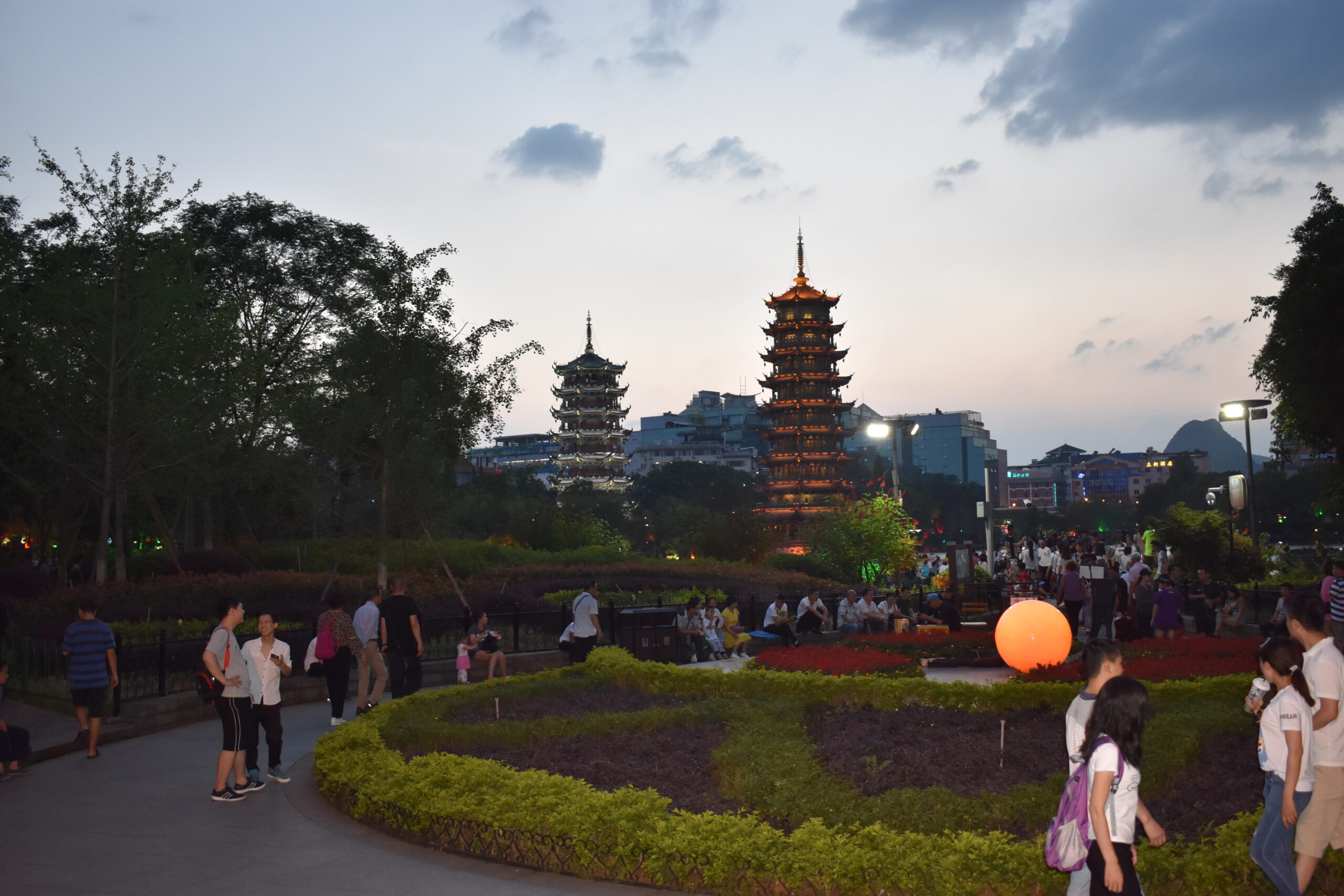
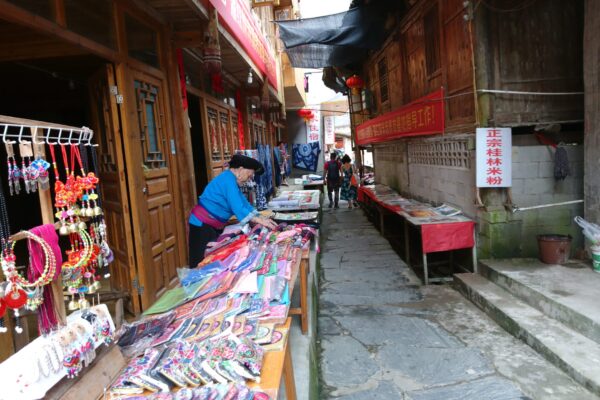
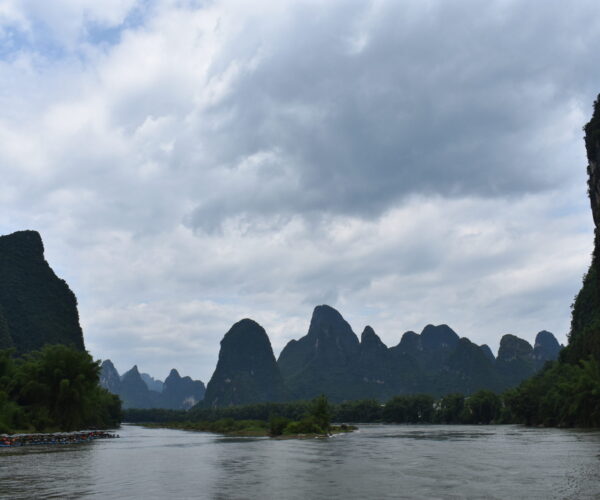
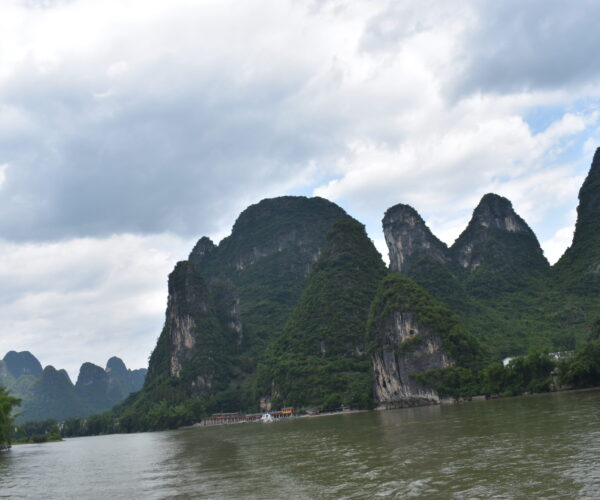
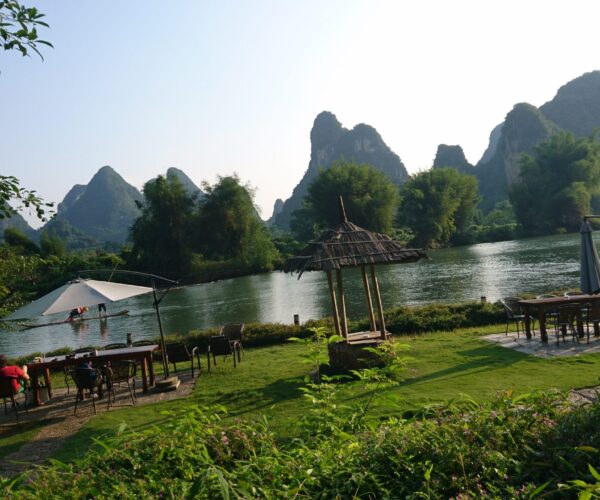
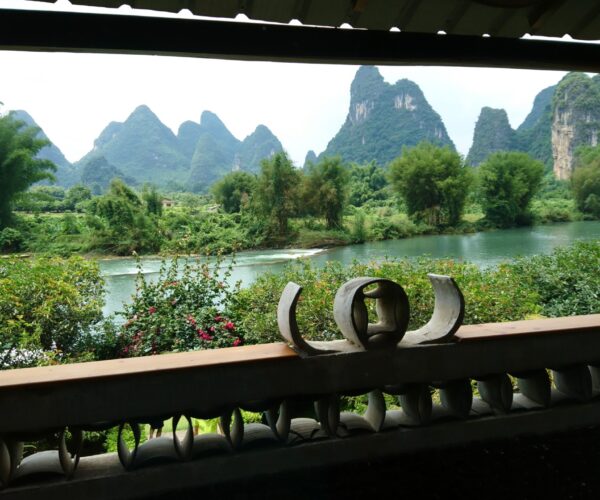
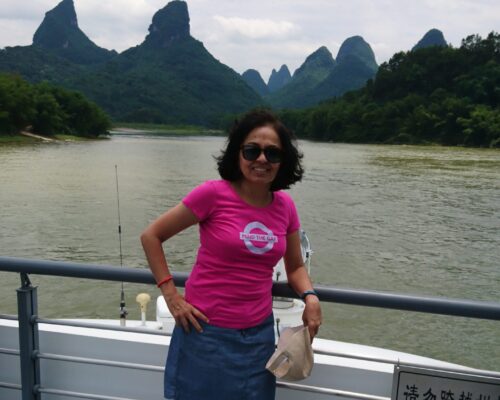
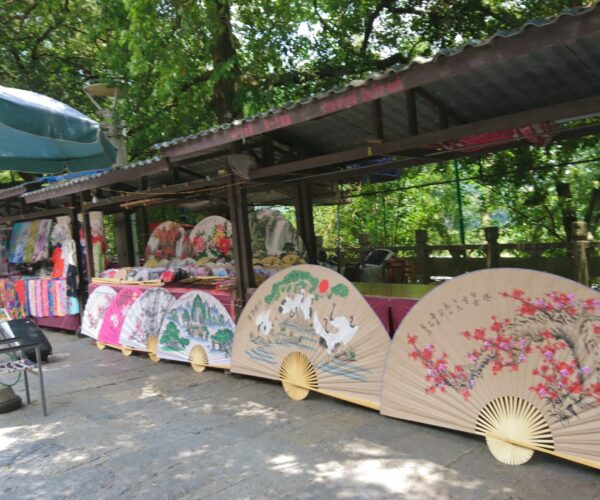
From Guilin, I reached the dock where I was to board a boat/ship to take me to the next destination, Yangshuo. The boat ride on the Li river would take 3 to 3.5 hours with the water levels being high in May due to the monsoons. I was greatly anticipating this part of my trip. There were many boats, varying in size in the dock and hooting their horns, they all set sail at the same time. It was not before long that there was a distance between each boat (thank goodness!). The scenery started to unfold soon and became more and more spectacular as the boat took its curvy path along the limestone and green high mountains (the Karst mountains). At every turn there were oohs and aahs! After a couple of hours, hunger took over and I went inside to inspect the large buffet. I found some vegetarian eats after enquiring with the waiters along with the usual hot tea. I don’t remember what I simply wanted to get back soon to the deck. At some point we were shown the peaks that are on the 20Y Chinese bill.
After an overdose of scenery, we docked in Yanshuo. I was told that someone from my hotel would come to pick me up and he did. We walked along the street called West Street which apparently is a famous street in Yangshuo. It had many many shops selling their wares to people who got off the boat. It was very colorful with big Chinese umbrellas.clothes, shawls and lots of other goods.
The hotel was nestled in between mountains, more like a retreat, facing the lazy river Li. I could have simply spent days in this place. My room too had a spectacular view of the mountains and water (as one of the pictures show). I went for a long walk and the staff told me that I should do some bike rides to the nearby villages. I decided to use the bicycle on the property and do exactly that the next day.
What was most eventful in Yangshuo? Well, I woke up early anticipating that bike ride. I made myself coffee in the room and then went and sat in the balcony, shutting the door behind me. I enjoyed my coffee for a while, gazing out into the beautiful scenery. After a while, I got up to get back into my room, turned the handle and the door wouldn’t budge. I had locked myself out. I waited to see if one of the hotel staff would pass by and started to get impatient after a while when no one passed by. I waited longer and longer with the hour stretching. I felt now that I was wasting so much time when I should have been ready and out for the bike ride. Finally, I saw one woman from the hotel staff and I yelled. She looked at me and I told her that I was locked out. I gestured to show I was locked out and she didn’t seem like she was going to do anything. Another lady came buy and they both started rapidly talking. I lost patience and said, call Michelle, and the name Michelle, a few times. She showed her hand asking me to wait. Came back with Michelle (phew! the only English speaking woman from the front desk) who understood my dilemma. She told me that they would get the key to my room and open it from the outside. I sighed with relief. After a little time, she came back to tell me that my room door was bolted from the inside. OMG. I had done that. The balony seemed quite a way off from the ground and from where they were standing. Michelle then said she would throw me keys and one of them would open the balcony door. I said ok. But when I saw her keybunch, I did a double take. It had like atleast 50 keys and she planned to throw it into my balcony. I didn’t have an option. I was so afraid of the big bunch coming at me like a missile. I decided to duck rather than try to catch it. It landed with a huge clang on the balcony floor. I picked it up and started to look through the likely sized keys to open the balcony door. Finally, I was in!! I went to the main door of the room and unbolted it, and handed the keys to Michelle with huge thanks.
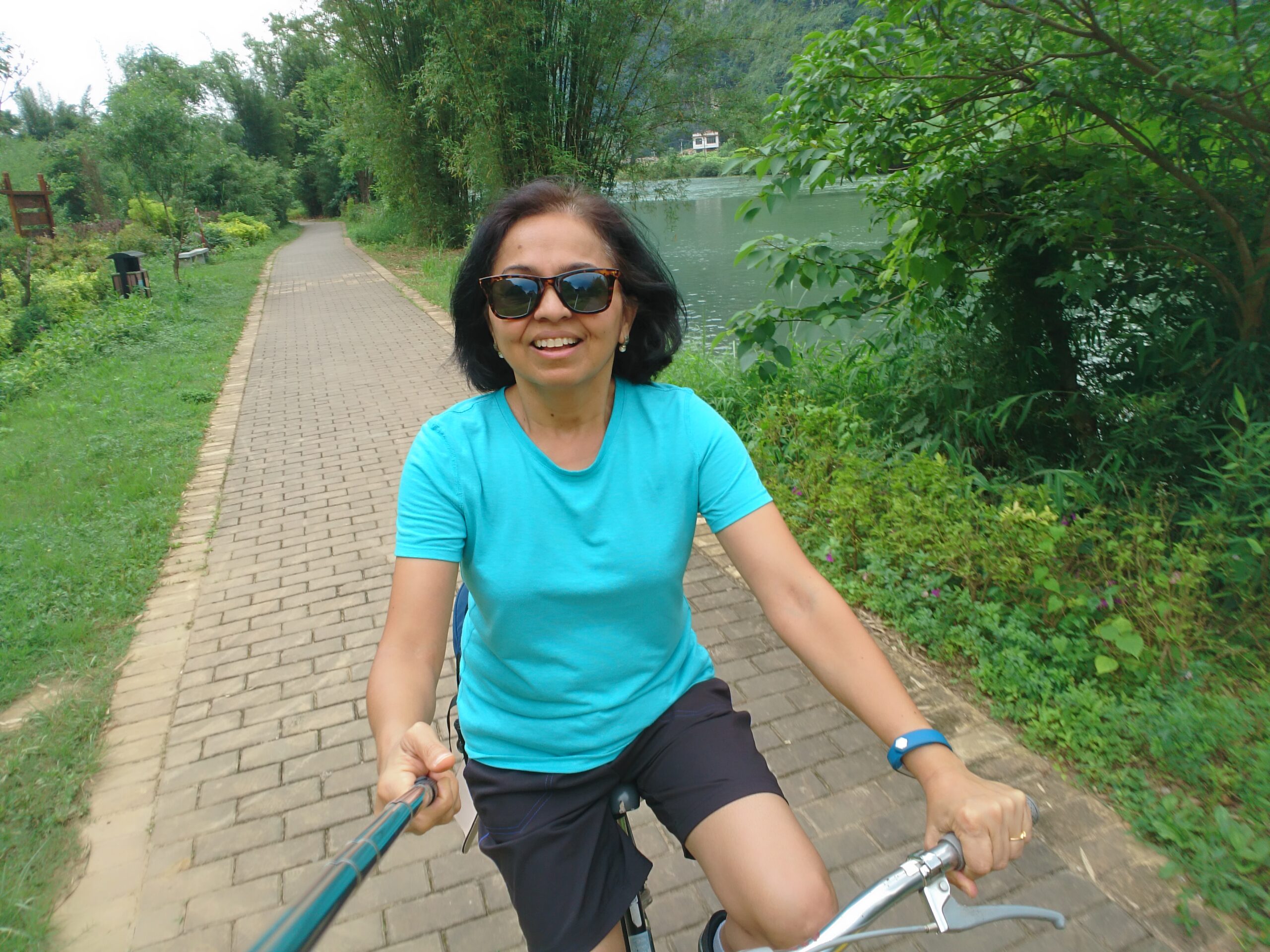
After this, I borrowed the bicycle and spent hours biking. I had to keep stopping to admire the scenery, the village and the various fields. I got lost at one point and sweated a little since it was not easy to find my way back (sweat for the second time this day!) but eventually made it to the hotel. During my ride, I watched a wedding party photoshoot – a Chinese couple (the girl in her while wedding gown) posing on a wooden barge, I saw some teenagers putting a huge insect of sort into a bottle and giggling, in the village, I saw hens wandering about and couples riding scooters with a built-in umbrella!!
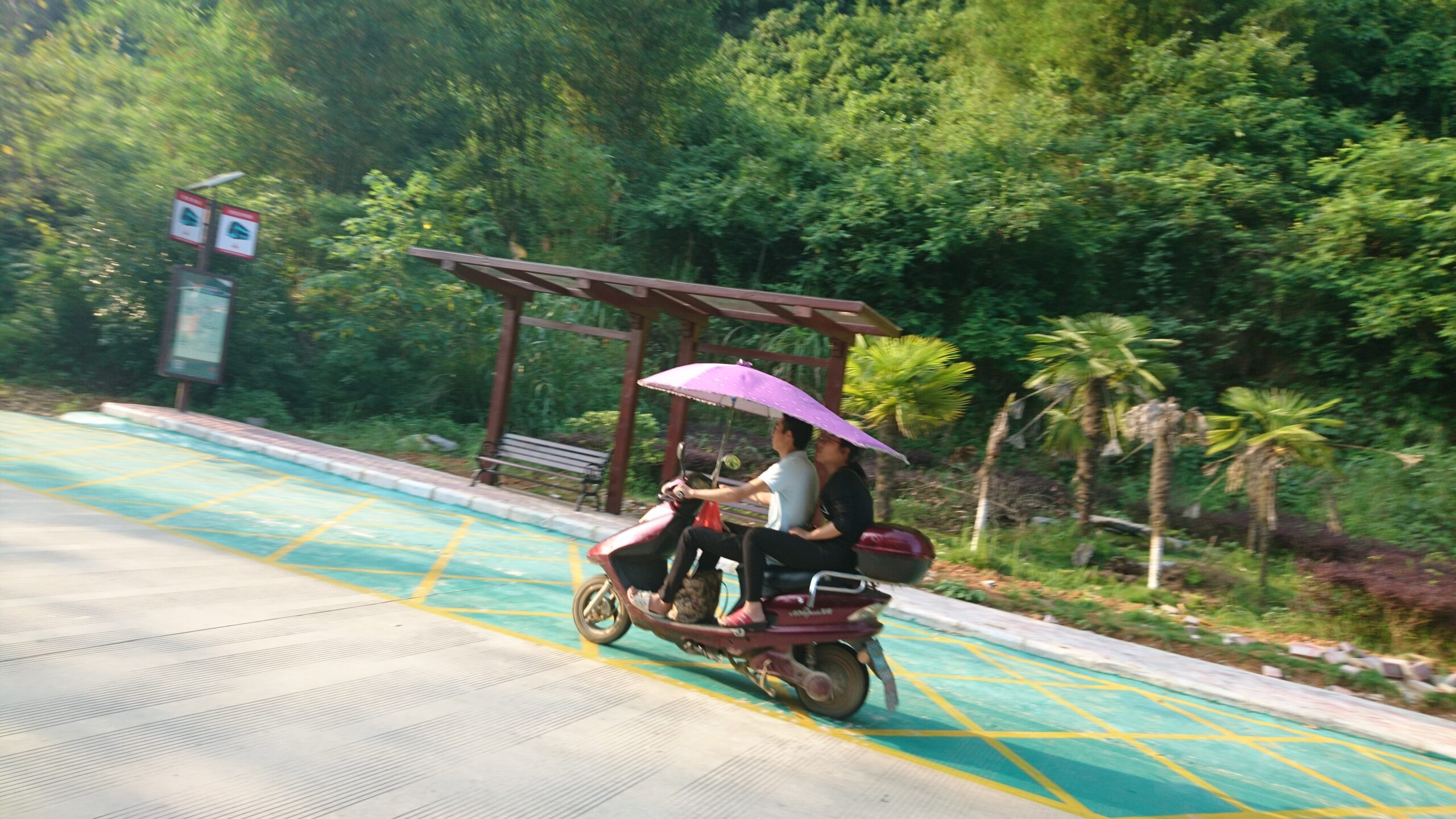
In the evening, I had booked to watch the Sanjie Liu impression, an outdoor theatrical and musical performance set against the backdrop of the Krast mountains. What an amazing looking stage that was the river with the Karst mountains as the backdrop. Created by renowned Chinese director Zhang Yimou who was also the director of the opening ceremony of the 2008 Olympics, the show is inspired by the traditional folk tale of Liu Sanjie, a legendary figure known for her beautiful singing voice. The large-scale outdoor production combines music, dance, lighting effects, and natural scenery to create a mesmerizing experience. The performance unfolds on the water, with performers using bamboo rafts, boats, and the river itself as part of the stage. The show has a cast of about 600 performers, including local villagers and professional actors, singers, and dancers. The stunning visual effects, elaborate costumes, colorful lighting, and synchronization of such a large number of people is simply unimaginable (in case you have looked for it on Youtube, its a watered down effect!).
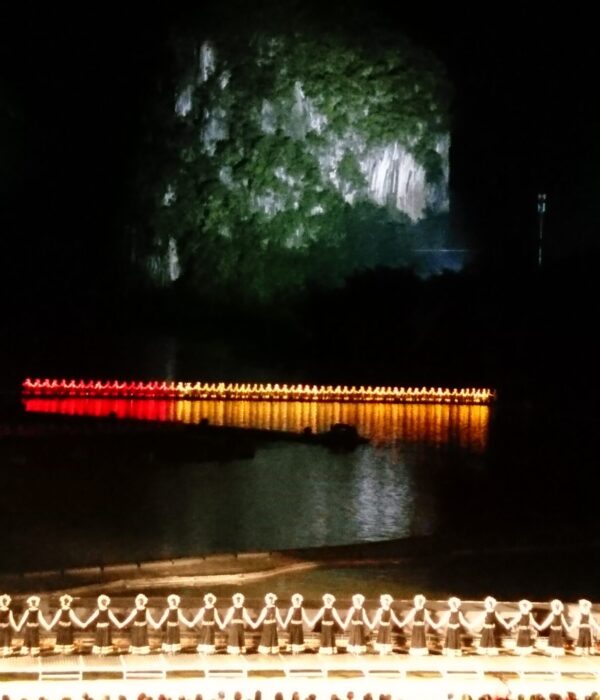
After three days of Yangshuo, it was time to get back to reality. And that was back to Guilin and to catch a flight to my last destination, Shanghai! At the airport, as I sat and people-watched, I realized how stylishly dressed, young people in China were, all over. After years of US living and seeing people in sweats and other such uber-casual clothes, I couldn’t help realizing the contrast. It was fun to watch various high fashion clothing.
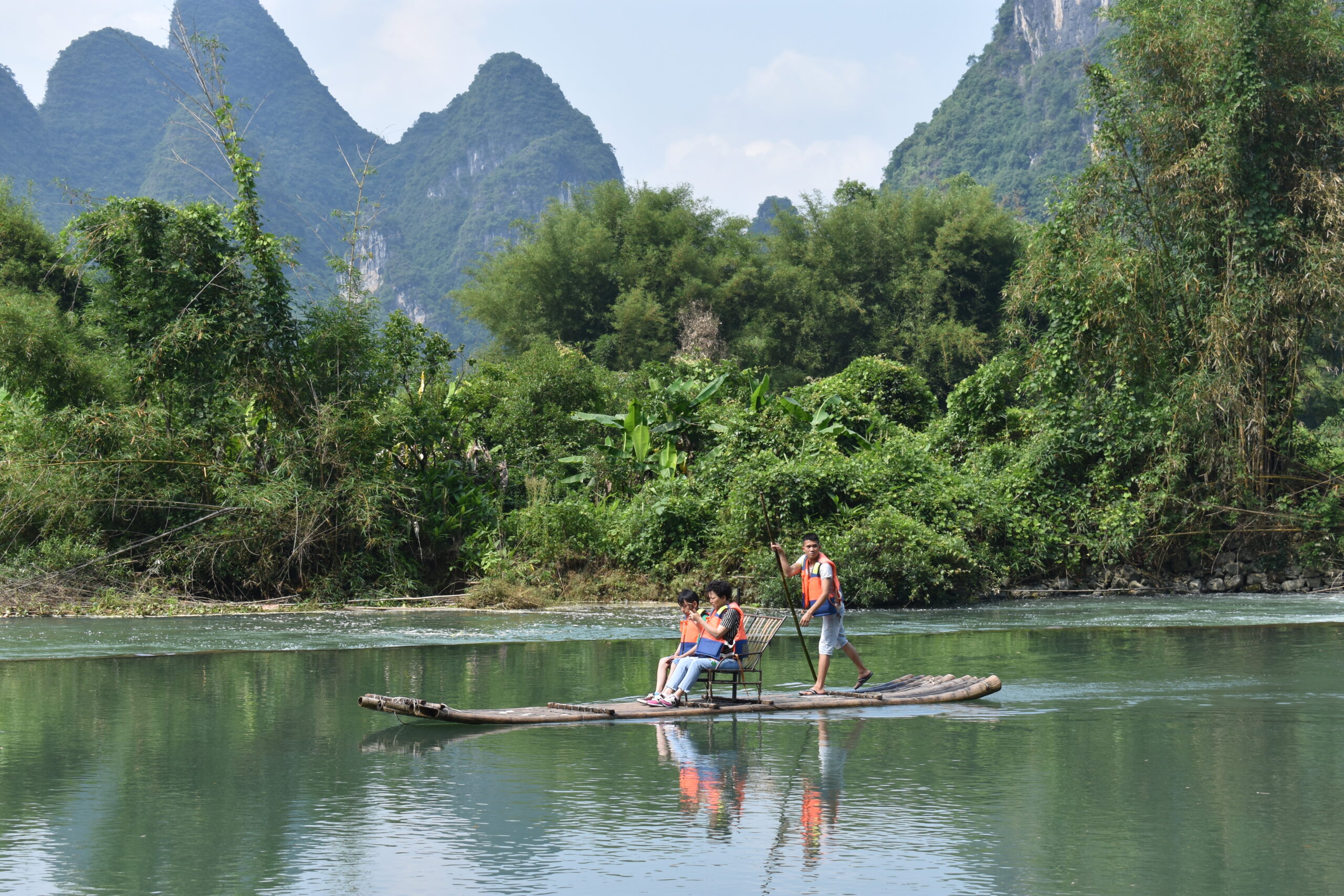
Shanghai was the extreme opposite of where I was coming from (Yangshuo)! Swanky, modern, fast-paced, glittering glass and metal buildings, even quite the contrast to Beijing. I checked into a Marriott, walking distance from the famous Nanjing road. I felt a sigh of relief coming back to a place that seemed so safe after the ones I had been to over the last many days. Not in terms of crime or anything but the comfort of something that felt “familiar” though I had never been there before. Seeing the usual Costas, the Starbucks, brand names I knew versus being a a village in a new country.
I did the touristy stuff that was already described in the Highlights section and so nothing to really write much about here. Just that I simply loved the Art museum. I had the Guide only for a day to do the sights and she was a very enthusiastic girl who made me try some vegetarian eats at the museum and then the Xiaolongbao outside.
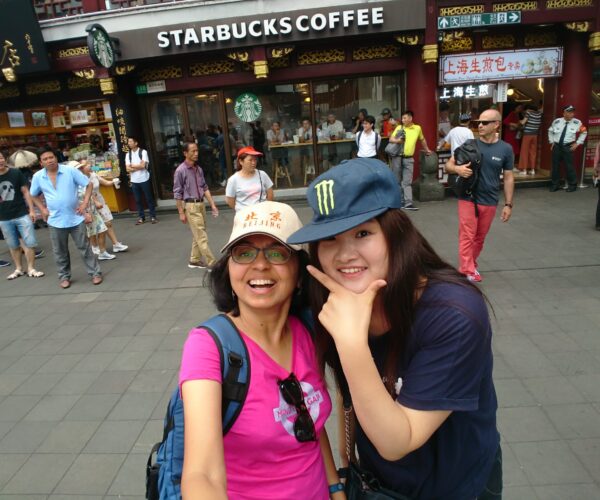
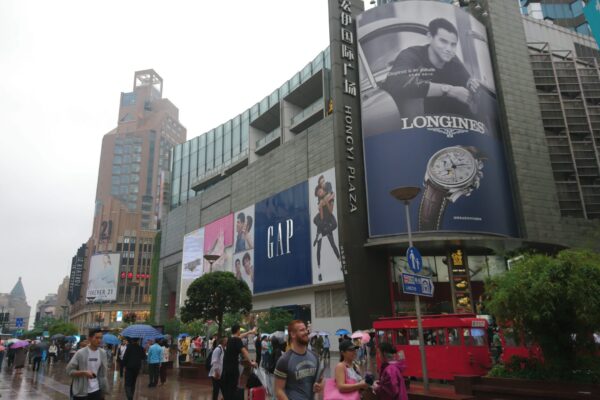
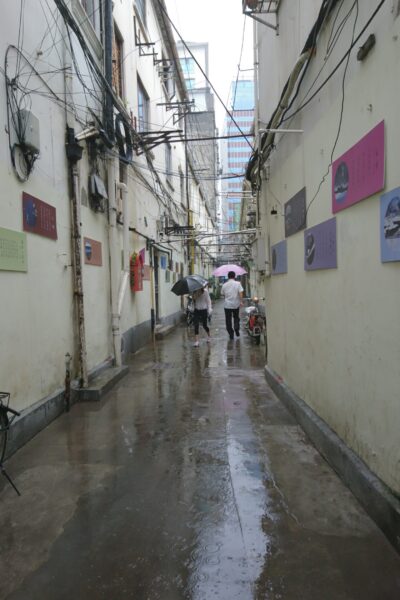
The next day I had no guide as I decided to do Nanjing road and the Bund by night on my own. I enjoyed walking up and down the Nanjing road bustle. I got literally chased by a kid and bamboozled into buying 2 bags. The story goes like this: I was looking interested in purses and bags by staring at a shop window and then asking for the price inside. I stepped out and after I had walked a few steps, a kid (about 13 or 14 years old, it seemed) materialized from nowhere and kept telling me to go to his shop for brand name bags. He kept pace with me and wouldn’t give up until I had to follow him. Although he said his shop was around the corner, I found myself walking through some narrow streets in the rain until we reached a shop front. I was definitely not comfortable when the adult in the shop opened another door to lead me inside to the interior of the store. But then I saw a few Americans there and saw them shopping which made me not turn around and walk out. Anyway, so then started the showing of various purses and bags when I began to show interest in a couple of those bags and ask for the price. This is the true China shopping experience one cannot miss!! 🙂 They start at something like $500 per bag and say, “for you, $450” by typing the number on their calculator. I then say, no thanks and start to walk out. They ask, “how much you pay?” to which I respond, “it is not even close to my budget and so I don’t want it”. I open the door and start to walk off and the kid comes running behind, saying 400, 300, 200 etc….the number keeps coming down as I walk farther and keep saying, “sorry, no, I don’t want it”. Finally, the kid is down to 100. I decide to take a plunge and say 2 for 100. OMG. The kid says, “OK, come” and I am both embarrassed and ashamed that I have to go back to that store. But when I get there, the shop keepers don’t bat an eyelid, they speak something rapid (I suppose the number is communicated) and the transaction is finished, the purses are in my hand. A cigarette lighter is lit and is held to them to assure me it is “real” leather and does not burn! Ha ha!! This is just too hilarious but I keep a straight face. Leather or not, it’s a full worth knock off, a Tory Burch bag and a Coach purse 😉 A loot as far as I am concerned. But I also decide it is not an experience I will care to ever repeat as it may not be safe.
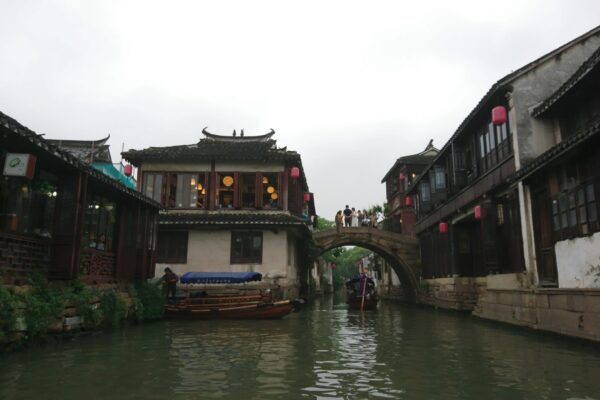
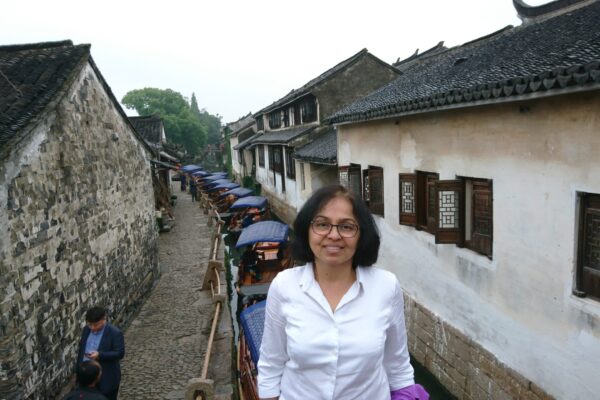
On the third day, I booked a small-group Viator tour to take me to the water town. The water town that is an hour from Shanghai also was a beautiful experience with the boat ride in the canals and seeing the well-kept quaint town. The boatman sang, people of other nationalities on the same trip all got friendly with each other, we helped take pictures of one another and walked around the town. On the very last day in Shanghai, I wanted to try the Maglev (magnetic train) from the city to the airport but suddenly I didn’t want to try anything more new on the trip where I had to figure out the whats and the hows with tickets, the language etc! I was done!! I took a cab from the hotel to the airport, boarded the flight and got back home.
Free Subscribe
HOW YOU CAN SUPPORT THIS SITE
- Leave a comment on this page (scroll down), share your own experiences if you have already been to this place.
- Subscribe to travelstosavour and receive 2 free blog posts per month, featuring 2 new destinations (scroll down to the footer to subscribe).
- Follow travelstosavour on social media – Facebook, Instagram and Youtube (by a click of the button in the footer) and share all the goodies with your pals!
Check out other destinations and nature escapes on this site.


WANT A CUSTOM ITINERARY?
No time or inclination to delve into detailed vacation-planning? No worries!
Let’s talk…..I can curate and customize a day-by-day itinerary for you.
Remember to visit Services & About for more details.


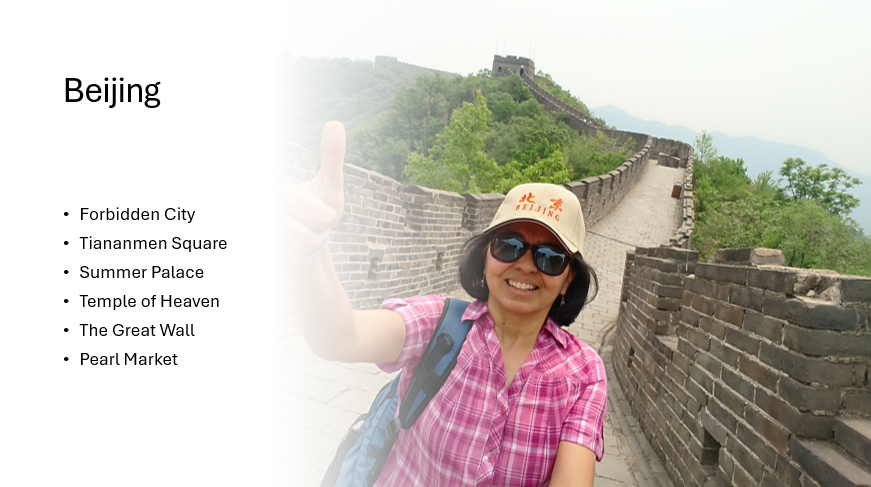
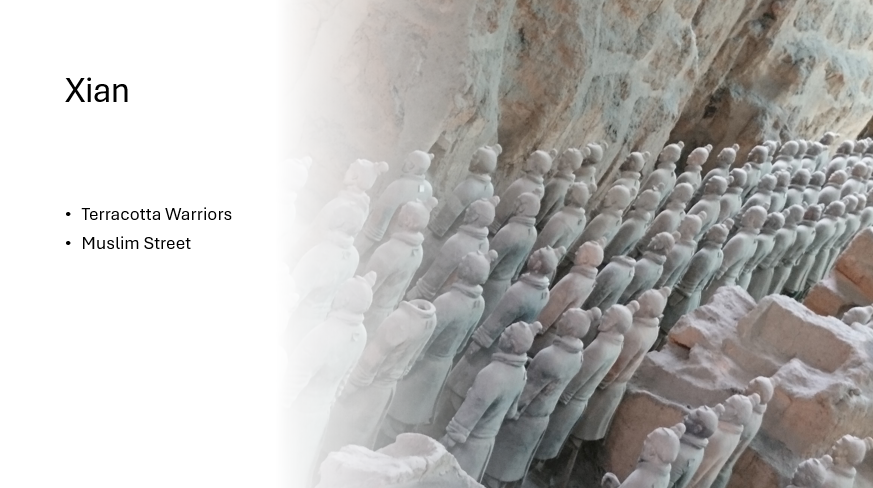
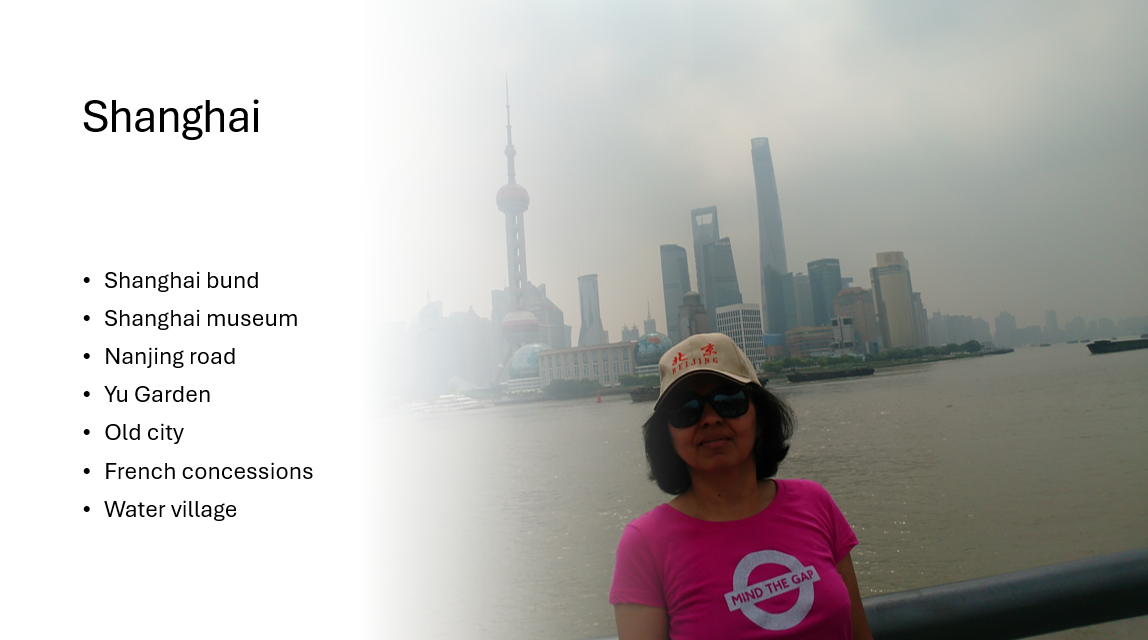
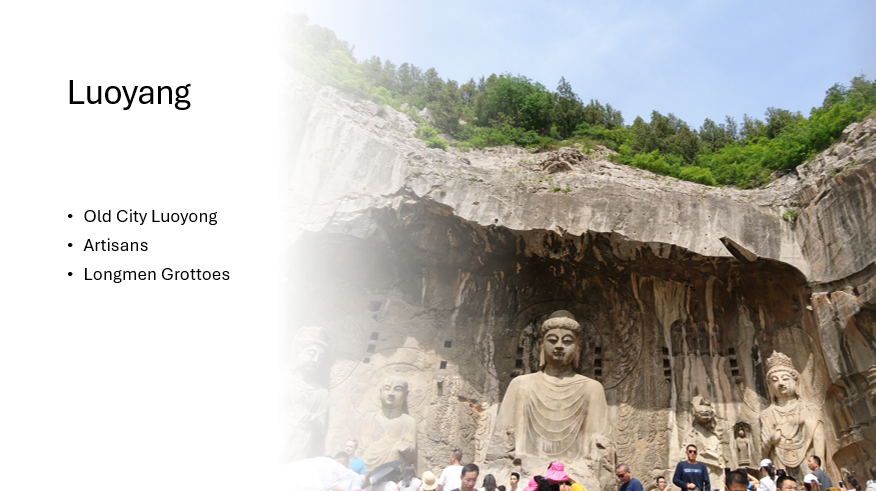

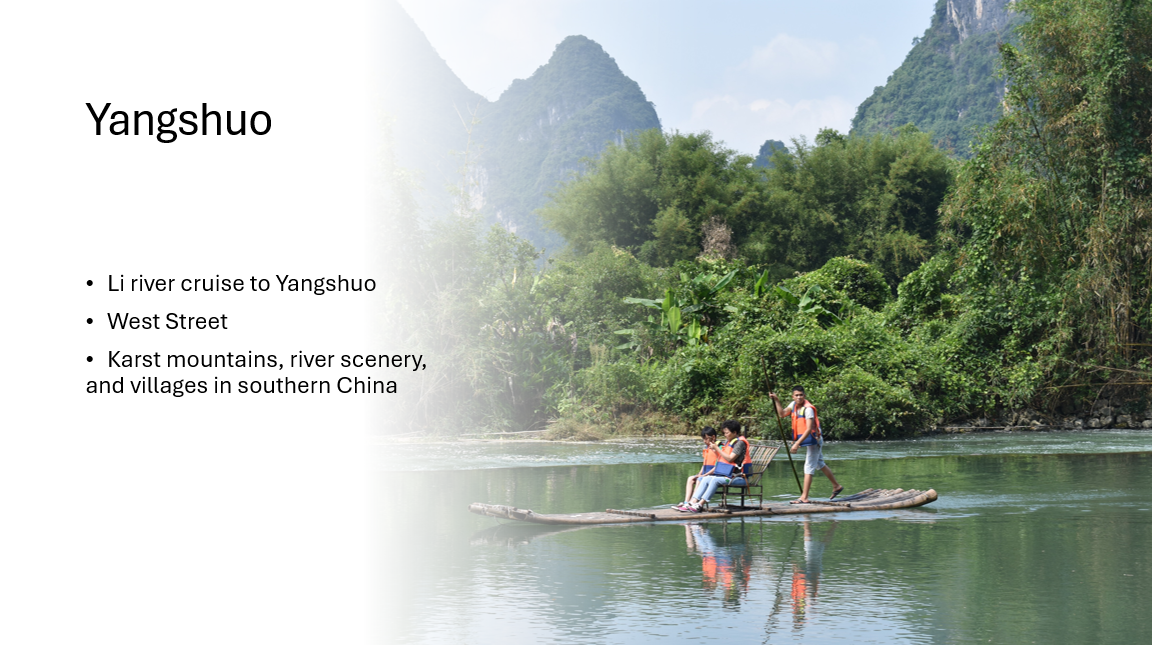
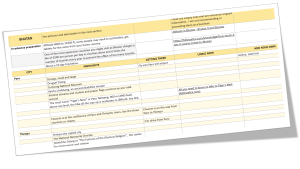
Well written and beautiful photos!
Thanks for looking through and appreciating, Mik!
Well written and informative post. I contacted Eric Wu , English speaking tour operator. He has been very prompt and helpful. Thanks for sharing his contact details.
He gave us reasonable pricing for a 2 weeks China tour .
Thank you, Divya. Some wonderful places to explore in China and look forward to hearing more after your trip.